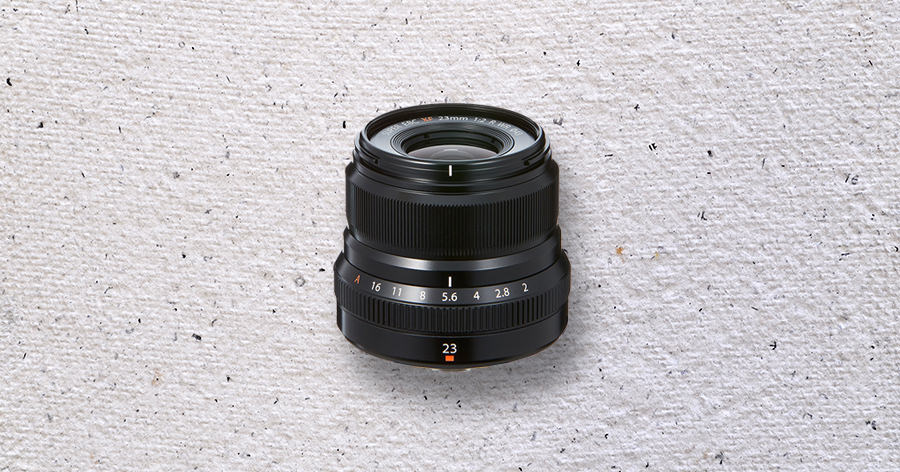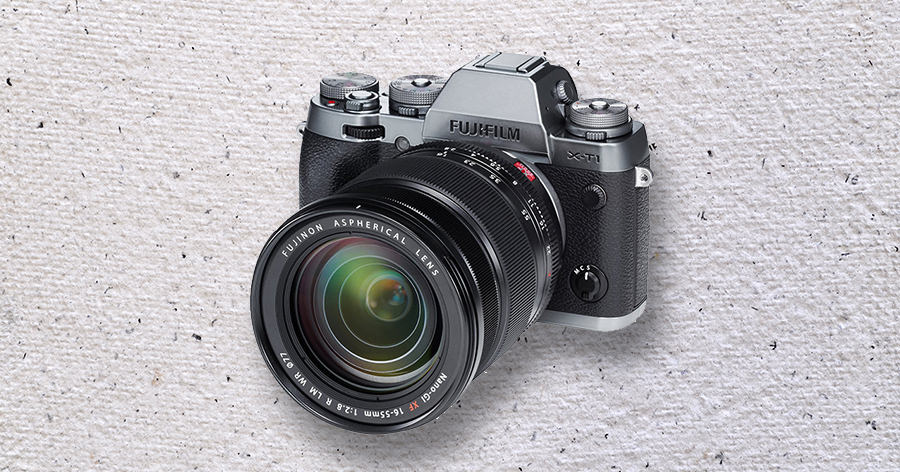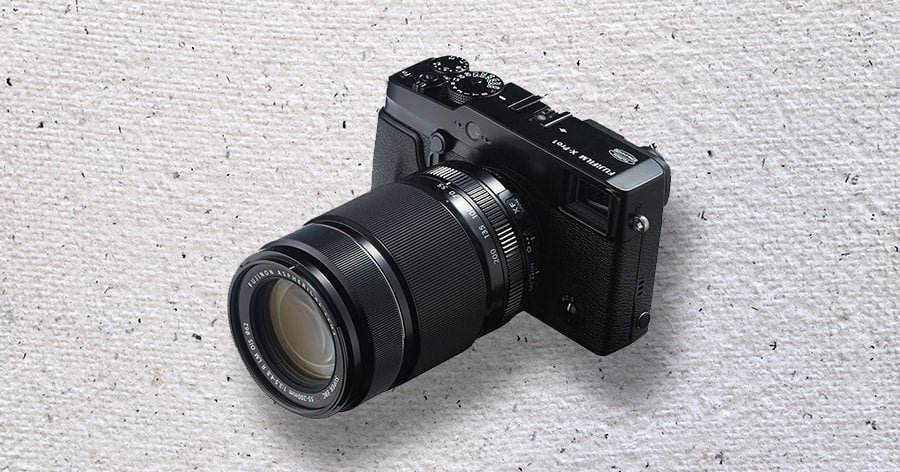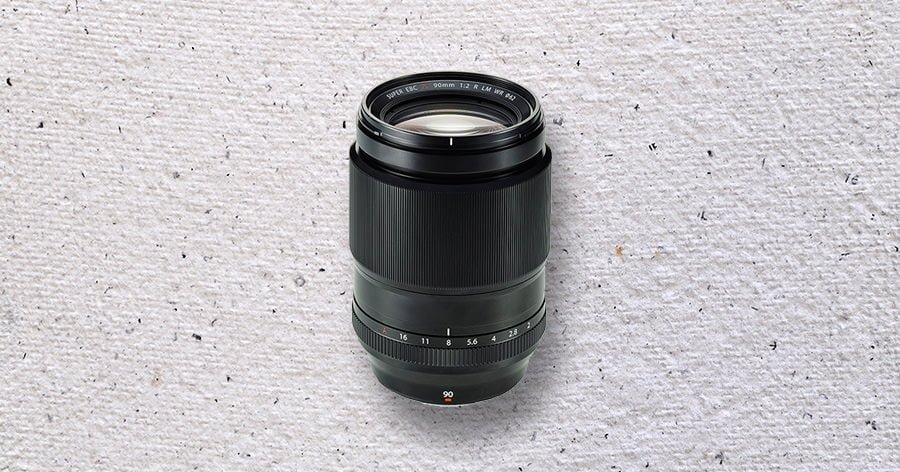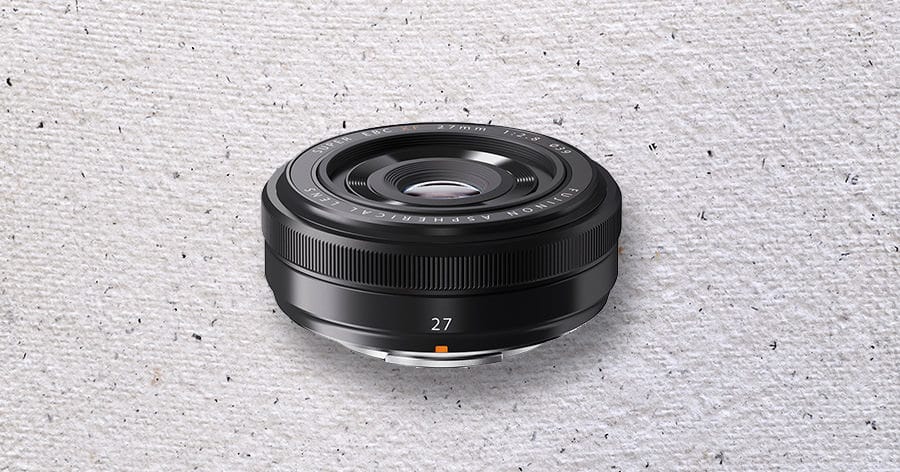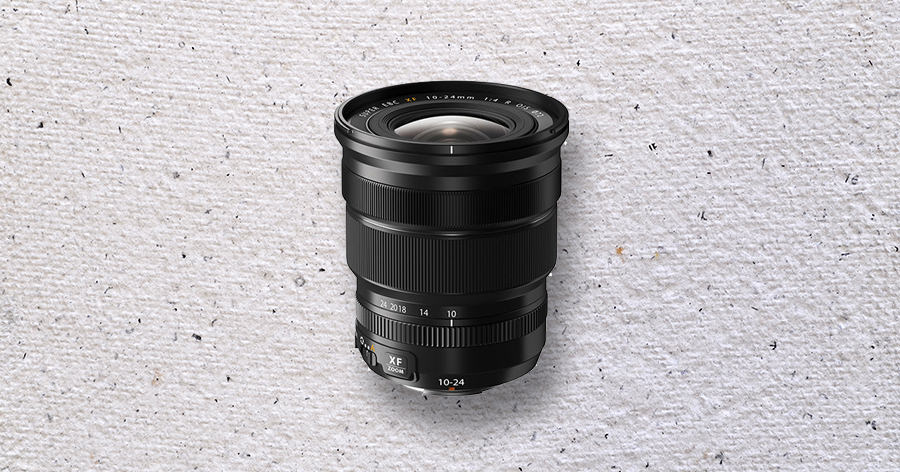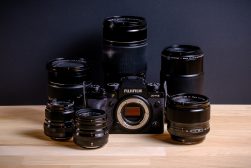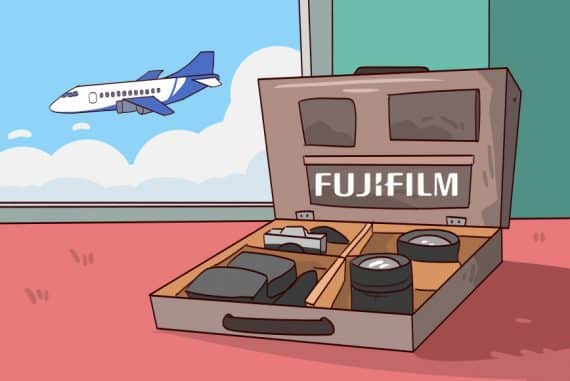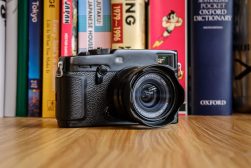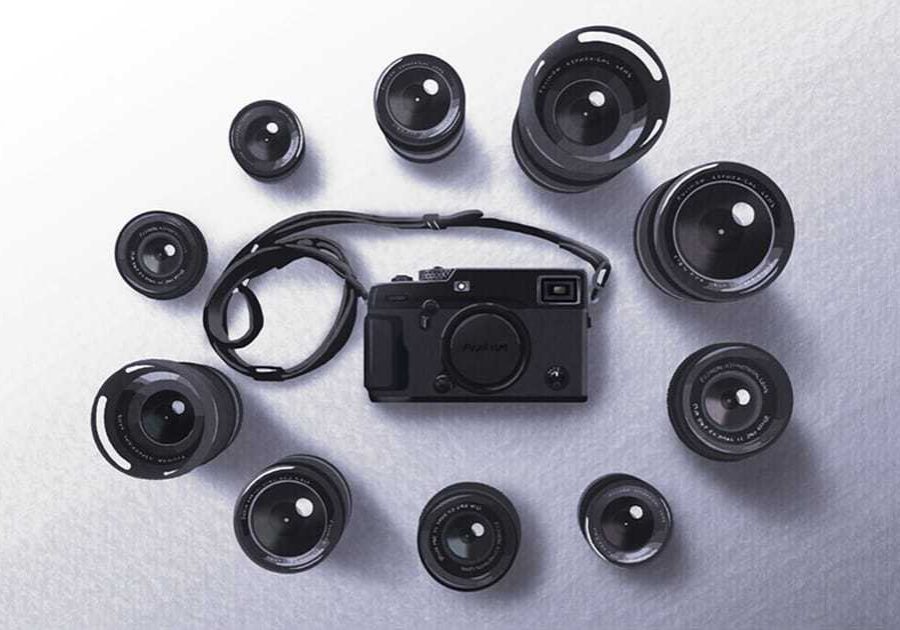
12 Best Fuji Lenses in 2024 for Fujifilm X Mount (All Budgets)
Discover the best Fuji lenses of the year in this mammoth guide which includes sample photos, expert opinion and more. All budget X-Mount lenses reviewed.
Camera Gear Guides | Fujifilm Lens Guides | Lens Guides | By Mark Condon | Last Updated: February 6, 2024
This roundup of the best Fuji lenses has been updated to keep up with the huge popularity of Fuji X Mount Cameras.
Fujifilm’s high-performance APS-C mirrorless cameras and the incredible lens lineup entice more and more amateur and professional photographers each year.
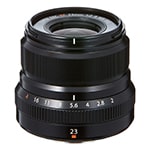
Versatile focal length with outstanding optics in a lightweight, compact and weather-sealed body at a great price.
Despite recent camera releases by other brands, the well-established X-mount Fujifilm lenses lineup means many photographers keep returning to X Mount mirrorless cameras.
With the launch of the formidable X-T5, as well as useful firmware updates to many of the existing X-series cameras, it’s clear that the demand for high-quality Fujifilm XF lenses will just keep on growing in 2024.
Let’s look at the top lens options for your Fuji camera.
What are the Best Fuji Lenses in 2024?
| Image | Product | Features | ||
|---|---|---|---|---|
 | Fuji 23mm f/2 WROUR #1 CHOICE |
| CHECK AMAZON PRICE →CHECK MOMENT PRICE → | |
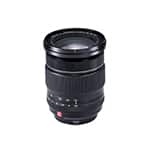 | Fuji 16-55mm f/2.8TOP RATED |
| CHECK AMAZON PRICE →CHECK MOMENT PRICE → | |
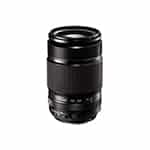 | Fuji 55-200mm f/3.5-4.8BEST VALUE ZOOM |
| CHECK AMAZON PRICE →CHECK MOMENT PRICE → | |
 | Fuji 35mm f/1.4GREAT VALUE |
| CHECK AMAZON PRICE →CHECK MOMENT PRICE → | |
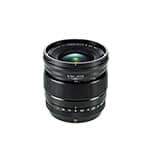 | Fuji 16mm f/1.4BEST WIDE ANGLE PRIME |
| CHECK AMAZON PRICE →CHECK MOMENT PRICE → | |
 | Fuji 23mm f/1.4BEST FAST PRIME |
| CHECK AMAZON PRICE →CHECK MOMENT PRICE → | |
 | Fuji 90mm f/2BEST TELEPHOTO PRIME |
| CHECK AMAZON PRICE →CHECK MOMENT PRICE → | |
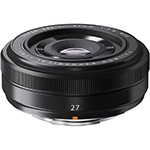 | Fuji 27mm f/2.8BEST BUDGET PRIME |
| CHECK AMAZON PRICE →CHECK MOMENT PRICE → | |
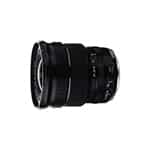 | Fuji 10-24mm f/4BEST WIDE ANGLE ZOOM |
| CHECK AMAZON PRICE →CHECK MOMENT PRICE → | |
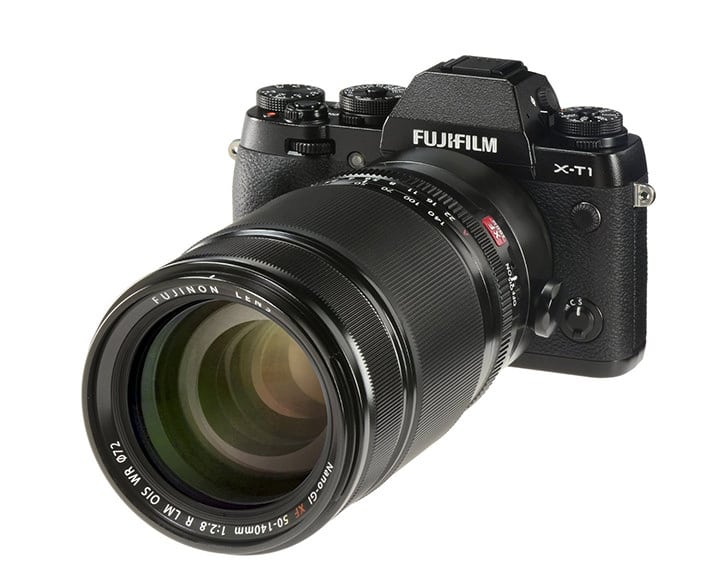 | Fuji 50-140mm f/2.8BEST MID ZOOM |
| CHECK AMAZON PRICE →CHECK MOMENT PRICE → | |
 | Fuji 56mm f/1.2BEST BOKEH |
| CHECK AMAZON PRICE →CHECK MOMENT PRICE → |
The compact, lightweight, high quality and affordable lens selection are the major drawcards of the Fujifilm mirrorless camera system.
Each and every Fujinon camera lens has been designed specifically for Fujifilm X series cameras, providing high-quality optics and seamless compatibility.
So let’s take a look at the best Fuji lenses right now, along with some samples of Fujinon lens photos so you get an idea of what each one is capable of.
1. Fuji 23mm f/2 WR
- Aperture: f/2
- Focal Length: 23mm (35mm equivalent)
- Dimensions: 5 x 5.4 x 4.3 in. (127 x 137 x 109 mm)
- Weight: 0.39 lbs (180 g)
- Fuji 23mm f/2 Review
Among all the Fujifilm prime lenses, this is a bit of a bonus inclusion. I’ve already reviewed a 23mm lens (the f/1.4 version), so why the need to include another one?
The 23mm f/2 WR is a bit of a special weapon in the lineup and one that deserves a mention.
It’s also the best Fuji prime lens if want that elusive 35mm focal length on a budget ;-)
There are a few reasons why I think this is one of the best Fujifilm prime lenses and should be the first lens you consider when buying a Fuji mirrorless camera.
I have held a 23mm f/2 WR attached to a Fujifilm X-T2 under a running tap! When Fujifilm Australia kindly lent me one of their best mirrorless cameras for this lens review, they told me to have a go at this little stunt, and my jaw was on the floor…
The ‘WR’ in the name of the 23mm f/2 WR stands for ‘weather-resistant. You’ll see it on a few of the other Fujifilm lenses, including the 50mm f/2, 16mm f/1.4, 35mm f/2 and 90mm f/2, so in theory, my incredibly scientific ‘running water’ test is possible with all these lenses too (although you’ll need to be using one of Fuji’s weather-resistant camera bodies like the X-T4.)
As you can see, ‘weather resistant’ is a bit of an understatement, and bears testament to the incredible build quality of the 23mm f/2 WR lens.
The next impressive feature of the 23mm f/2 Fujifilm camera lens is its weight. Weighing in at only 180g, this little lens is one of the lightest in the range, and so small that you could keep it in your jacket pocket all day as a backup and not even notice it there.
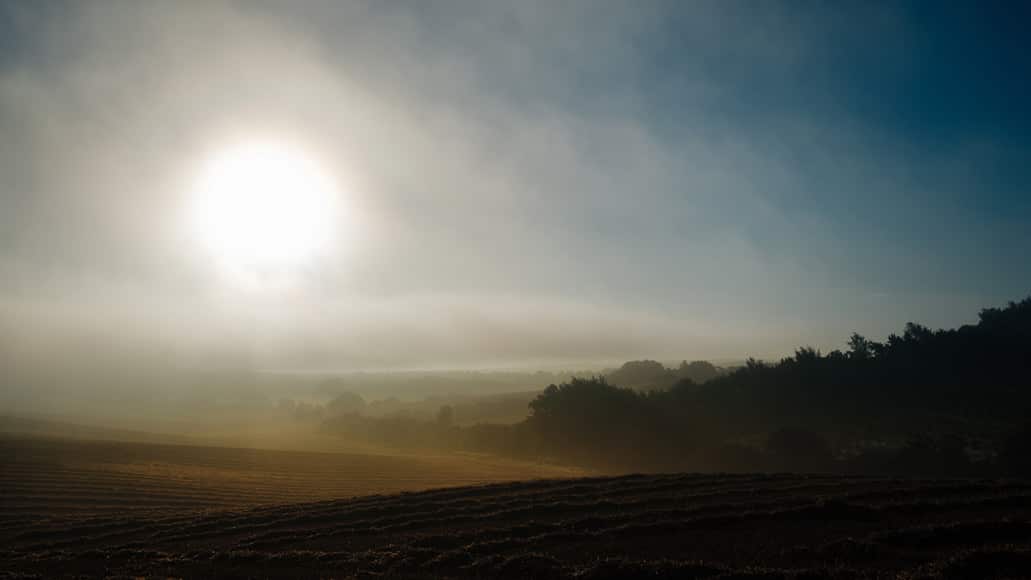
Fujifilm X-T2 + 23mm f/2 | f/5.6 | 1/3200 | ISO200 | © Jonas Rask
However, you’ll not want to reserve the 23mm f/2 WR as a mere backup, since the image quality it offers is superb. It’s just as sharp throughout its aperture range as its big brother the f/1.4, and most importantly, excels wide open at f/2.
You’ll have a hard time deciding between this f/2 Fuji lens and the f/1.4 variant in fact since the f/2 offers very similar image quality at almost half the price (and weight!) of the f/1.4 lens.
Unless you absolutely need the fastest glass you can buy (for low light shooting), I’d actually recommend investing in the 23mm f/2 WR Fujifilm wide angle lens and spending what you save on education.
23mm on a Fuji mirrorless camera body has a 35mm equivalent focal length on a full-frame sensor, the field of view of choice for street photographers, wedding photographers and any other photographer who wants a storytelling lens that’s versatile enough for portraits, landscapes and everything in between.
I use a 35mm lens for 95% of my own wedding photography work – it’s just such an incredibly flexible focal length.
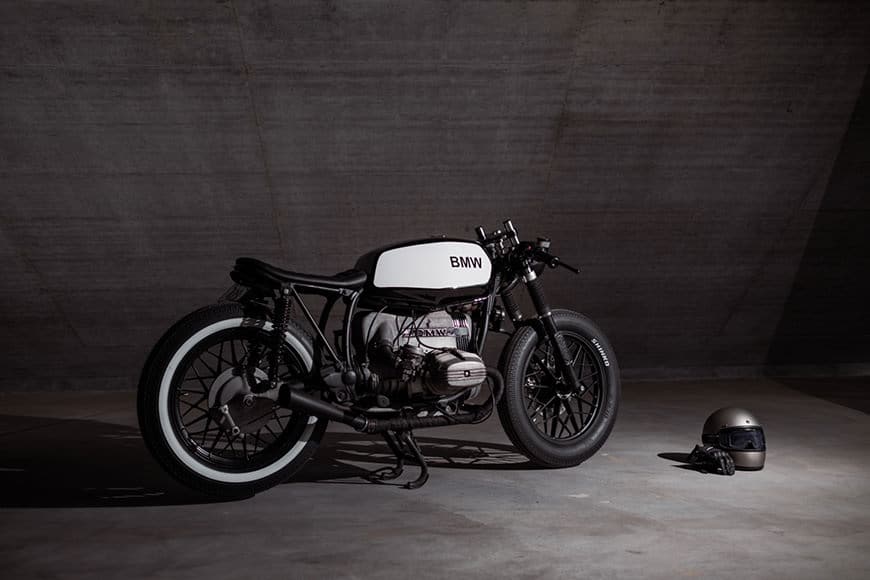
Fujifilm 23mm f/2 sample image | © Jonas Rask
So, aside from image quality, size and weatherproofing, another area where the 23mm f/2 WR Fujifilm x lens really stands out is Autofocus.
Fuji claims the lens can focus in 0.05 seconds, and during my testing, it never skipped a beat. I’d go as far as to say that in good light, the focus speed is even faster than the 23mm f/1.4 (which is understandable since it’s lighter).
The shape of the 23mm f/2 WR is rather unusual, going from wide to narrow(er), as opposed to remaining the same width or wider like most of the other Fujifilm x-series lenses.
When mounted on a slimline Fuji X body such as the Fuji X-Pro3 however, it actually looks better than the bulkier 23mm f/1.4 in my opinion – see other best lenses for X-Pro 3.
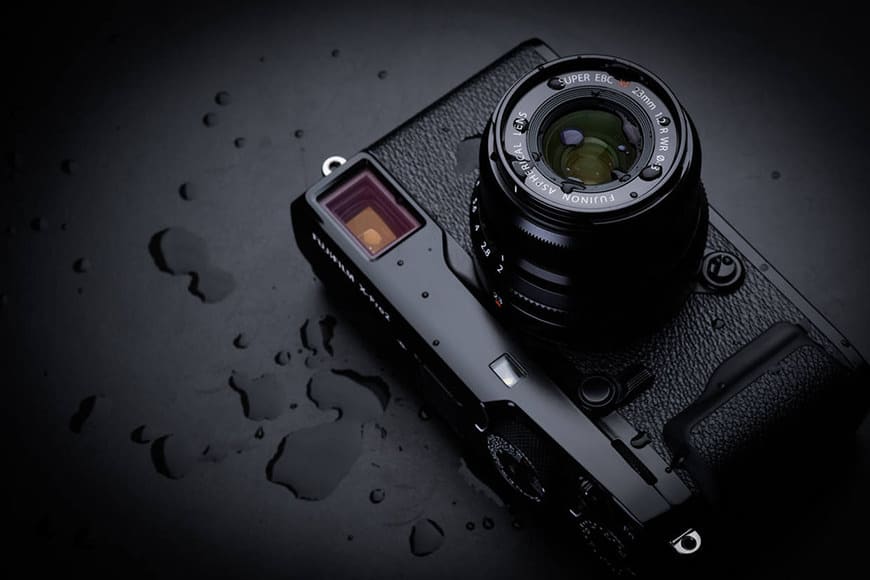
© Jonas Rask
You change the aperture on the 23mm f/2 WR by twisting the aperture ring which is much faster and more convenient than fiddling with dials when your mirrorless camera body is small.
The final pleasant surprise when it comes to this impressive little Fuji lens is the price. When you’ve just stumped up thousands of dollars for the latest Fuji mirrorless camera, it’s nice not to spend another thousand on a great lens after all!
You can click here to find the latest price on the 23mm f/2 WR, but at the time of writing this review, it sat just below $450, which really is great value for a lens of this calibre.
Many photographers search for the best cheap lenses for Fuji X, and this one’s definitely at the top of the list.

Fast autofocus even in low light makes the Fujifilm 23mm f/2 a great lens for street photography | © Jonas Rask
Although there is a slight difference in the bokeh of this lens when compared to that of its more expensive f/1.4 brother (mostly due to the difference in aperture blades), you’ll hardly notice unless you examine them side by side.
My advice would be unless you know you’ll need the f/1.4 version for low light work, grab a copy of the 23mm f/2 WR – I guarantee it’ll be attached to your Fuji camera the longest ;-)
2. Fuji 16-55mm f/2.8
- Aperture: f/2.8
- Focal Length: 16-55mm (24-84mm equivalent)
- Dimensions: 3.27 x 3.27 x 4.17 in. (83 x 83 x 105 mm)
- Weight: 1.44 lbs (653 g)
- Fuji 16-55mm f/2.8 Review
The weather-resistant Fujinon 16-55mm f/2.8 lens is a midrange zoom with a focal length equivalent to 24-84mm, and a constant f/2.8 aperture throughout the range.
It’s a pro-grade zoom Fujifilm lens with amazing optics and razor-sharpness from edge-to-edge.
If you are ready to make the investment, the 16-55mm f/2.8 is the best Fujifilm zoom lens in the midrange category, and also the most popular all-around focal length zoom available.
Fujifilm zoom lenses are known for their exceptional image quality and versatility in capturing a wide range of subjects and this is no exception.
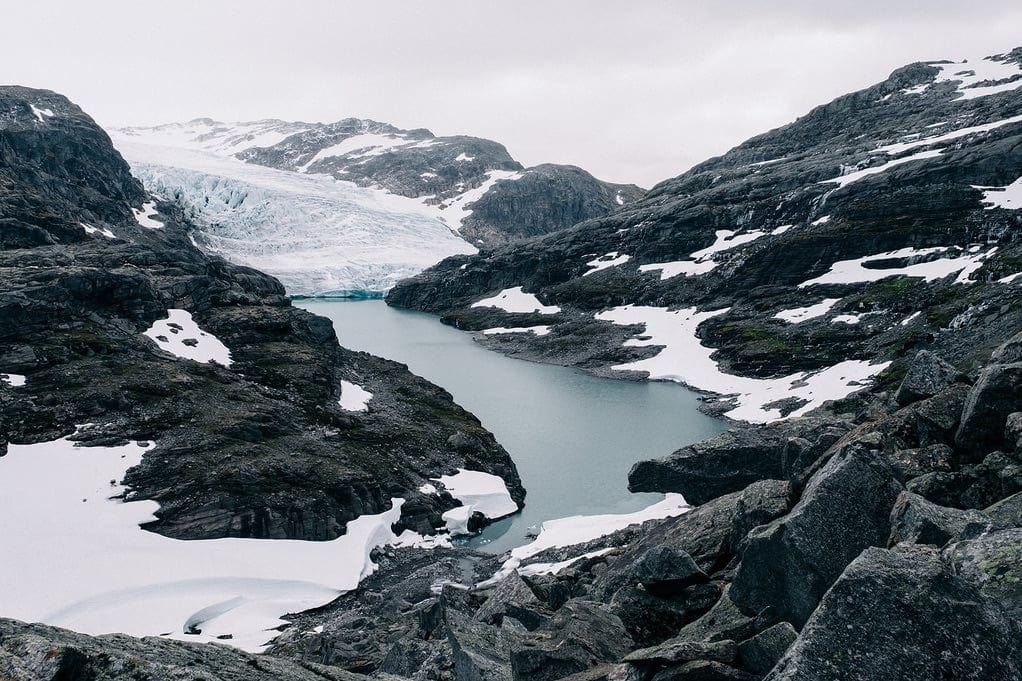
16-55mm f/2.8 Sample Image | © Martin Hulle
A cheaper (and lighter) alternative is the 18-55mm f/2.8, although it has to be said that the 18-55mm is in a different league to this 16-55mm f/2.8. 16mm as opposed to 18mm will also give you more flexibility for wide-angle shots too.
On a 35mm camera, the Fuji 16-55mm f/2.8’s closest lens would be the immensely popular 24-70mm f/2.8, a zoom range favoured by many pro photographers due to its versatility – from wide-angle to medium telephoto, a 24-70mm covers it all.
On the APS-C sensor Fujifilm cameras, a 16-55mm f/2.8 gives you even more range (up to an equivalent of 84mm).
Shot fully zoomed out to 55mm, the 16-55mm f/2.8 is an excellent portrait lens. If you step back enough and want to shoot wide, a non-distorted portrait can even be shot around 16mm, like the example below which was shot at 17mm.
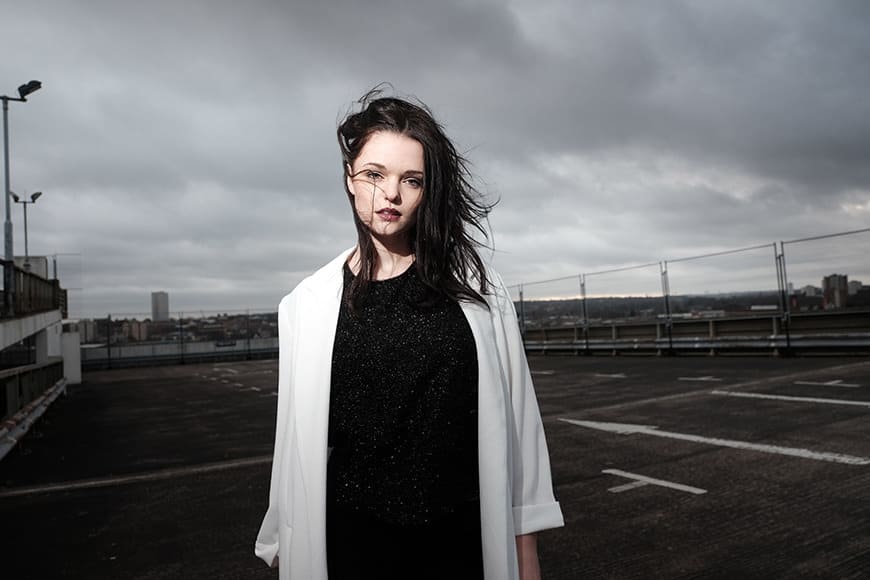
16-55mm f/2.8 Sample Image | © Dave Kal Piper
The 16-55mm f/2.8 is built out of metal which makes it very robust and a pleasure to hold. It’s also Weather Resistant, which is great for added peace of mind when shooting landscapes in the great outdoors.
Its solid build does, however, add to its weight, which often results in it being a lot heavier than the Fuji mirrorless camera it’s attached to (see photo above with the 16-55mm f/2.8 attached to a Fuji X-T1).
While the majority of Fujifilm X mount lenses are smaller and lighter than counterparts from other brands, this one does tip the scales.
However, if you don’t mind the weight, the 16-55mm f/2.8 is technically brilliant, and since the focal range is so versatile, it deserves to remain here as one of the top Fujinon lens options available this year.
3. Fuji 55-200mm f/3.5-4.8
- Aperture: f/2.5-4.8
- Focal Length: 550-200mm (80-300mm equivalent)
- Dimensions: 2.95 x 2.95 x 4.65 in. (74 x 74 x 118mm)
- Weight: 1.28 lbs (580 g)
- Fuji 55-200mm f/3.5-4.8 Review
Shown on a X-Pro1 above, the 55-200mm f/3,5-4.8 is a relatively portable Fuji telephoto lens that offers impressive image quality right across its wide zoom range.
Focus is silent and fast, perfectly complementing Fujifilm X mount mirrorless cameras for discreet shooting for fans of Fuji telephoto lenses.
The inbuilt image stabilisation of the 55-200mm f/3,5-4.8 is impressive, allowing the use of slow shutter speeds to prevent camera shake even when hand-holding in low light situations. Imagine being able to shoot 4 or 5 stops slower than you usually would with a long-range zoom lens and still have a sharp photo!
Being able to use slower shutter speeds in low light will allow you to use lower ISOs, which in turn leads to a cleaner final image.
The 55-200mm focal length when used on a Fuji X mount camera with a 1.52x crop factor shows the same angle of view as an 80-300mm lens on a 35mm camera – see this guide for more about focal length conversions.
This provides medium to long-range zoom capabilities, making the 55-200mm f/3,5-4.8 Fujifilm telephoto lens an excellent choice for cropping tight on landscape shots or pulling elements in the distance closer together (see the below image as an example).
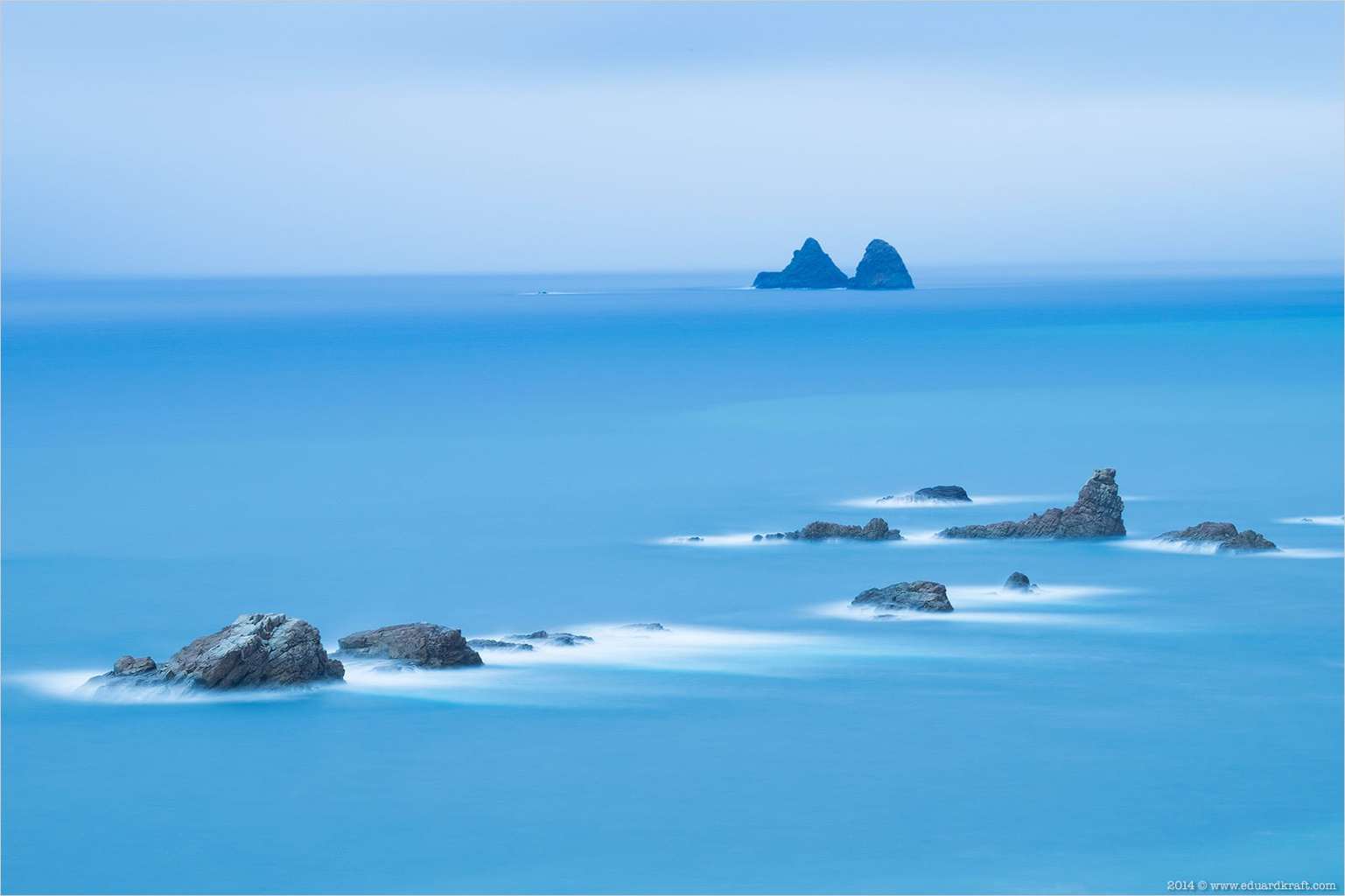
XF 55-200mm Sample Image | © Eduard Kraft
The build on the 55-200mm f/3,5-4.8 is solid, as with all of the Fuji X mount products. Autofocus is extremely fast and accurate thanks to two linear motors, and the bokeh from f/2.5 to 4.8 is beautiful and creamy.
In-focus elements are razor sharp at all settings (as they are with all the best X mount lenses in this guide), as illustrated well in the photo below.
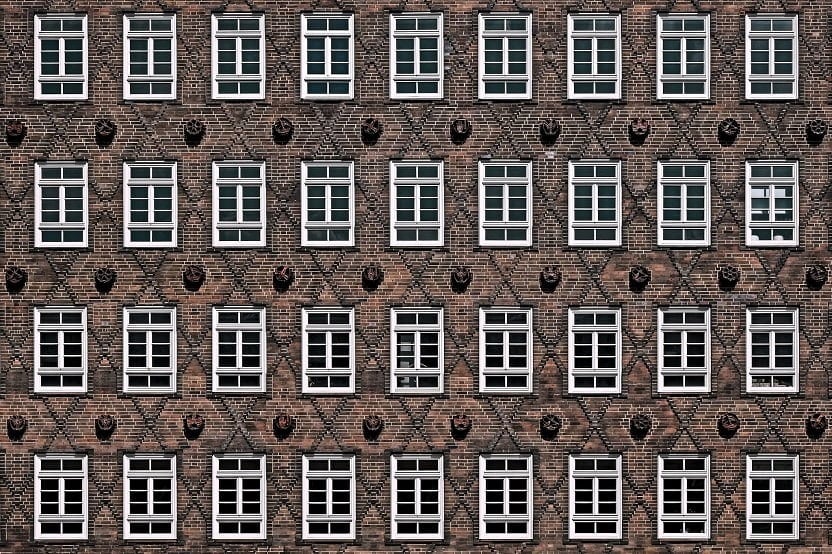
55-200mm f/3.5-4.8 Sample Image | © Freiraum7
My favourite feature of this impressive Fuji zoom lens is its ability to focus as close as 1.1 metres, which means you can capture high-quality telephoto close-ups, much like a macro lens.
It’s great to have such a broad focal range in one lens that’s much more compact and lightweight than an equivalent lens for a full-frame camera, and also that it can be used for close-ups.
With over 100 5 star reviews on Amazon, the 55-200mm f/3,5-4.8 is one of the best Fuji zoom lenses – an excellent all-around choice with a useful telephoto range and high image quality.
4. Fuji 35mm f/1.4

- Aperture: f/1.4
- Focal Length: 35mm (52mm equivalent)
- Dimensions: 2.56 x 2.56 x 2.17 in. (65 x 65 x 55 mm)
- Weight: 0.4 lbs (187 g)
It’s debatable whether this is the absolute best option available today, but the near-legendary Fujifilm 35mm f/1.4 is certainly the most popular lens in the Fuji X mount lens lineup.
With a staggering 130+ near-perfect reviews on Amazon and a 98% score on Imaging-Resource, this 52mm equivalent option is on the front of so many Fuji mirrorless cameras used professionally around the world… and for good reason.
Early in 2012, Fuji released the X-Pro 1 system, with this 35mm f/1,4 being one of the 3 flag-ship Fujifilm lenses.
It was touted as the perfect combination with the X-Pro series, giving a field of view closest to 50mm – the choice of so many photographers throughout time.
If I were to only buy one of the Fujifilm X lenses in this guide, I’d settle on this one, despite it being one of the older options.
The 35mm f/1,4 is capable of sharp image reproduction, but stopped down to f/5.6 is where the sharpness is most impressive.
That said, if you’re buying an f/1.4 lens, you’ll want to be shooting it wide-open, and thankfully the bokeh, when shot in this way, is beautiful. Wide-open, edges are a little soft, but this adds to a natural vignetting of the image, giving great character.
Images such as the one below may not be optically perfect, but they exhibit a certain character that is unattainable with other Fujifilm lenses.
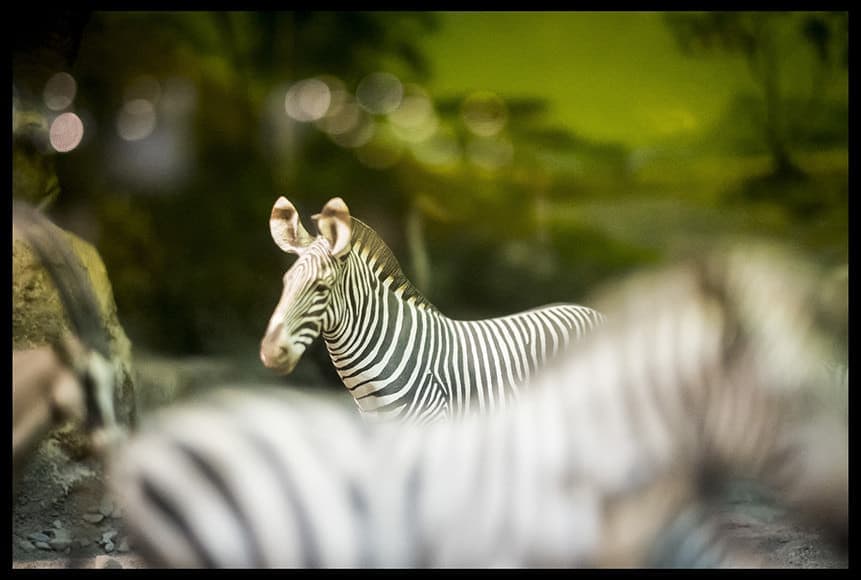
Fujifilm 35mm f/1.4 Sample Image | © Soe Lin
Sharpness isn’t everything after all, especially in portraiture, where the 35mm f/1,4 is still very popular.
Zach Arias had this to say about this lens’s unique character: “There are Fuifilm lenses that I love and then there are those that have magic inside of them. (The 35mm f/1.4) is one of three I’ve owned in my life that I feel have that magical quality.”
Another plus point is the price of the Fuji 35mm f/1,4, making it one of the more affordable options when buying a new Fuji mirrorless camera body.
(Those wanting an even more affordable 35mm option can look at the 35mm f/2, another extremely popular lens.)
It goes without saying that the 35mm f/1,4 (as with all the other primes in the Fujinon lens lineup) is beautiful to hold and to look at, suiting the black bodies of the Fuji X-T series and X-Pro series perfectly.
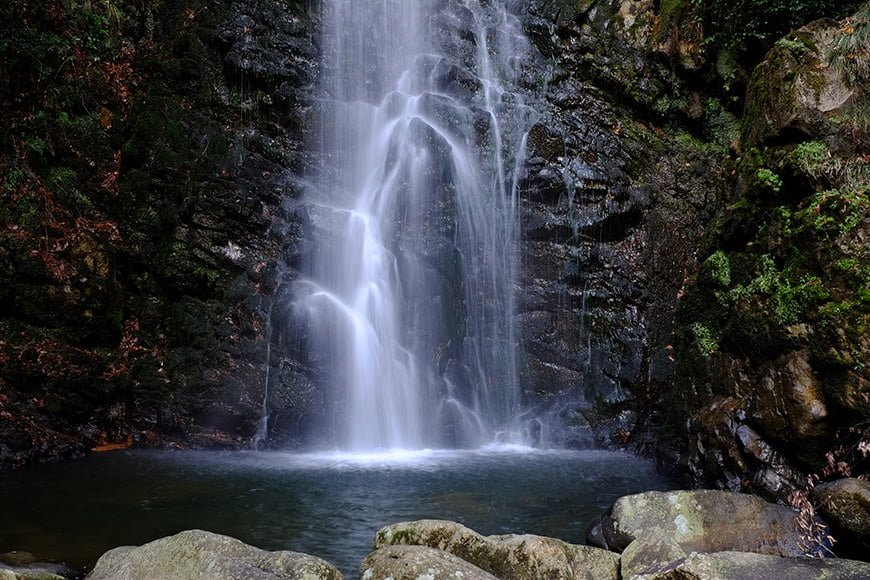
Silent operation combined with these stealthy looks makes the combination popular with street photographers and documentary wedding photographers who wish to remain unnoticed to capture moments candidly.
When combined with the eerily silent Fujifilm X-H1, you’ve got yourself a camera set up that won’t turn a single head, even when you’re shooting at high-speed burst mode!
Despite its age, the Fujifilm 35mm f/1.4 is still an excellent performer. Perhaps not as sharp and optically perfect as some of the others in this Fuji best lens roundup, but nevertheless, displaying a certain quality to image rendering that sets it a step above the rest.
Don’t just take my word for it though – have a look at the hundreds of 5-star reviews on Amazon for the Fuji 35mm f/1.4. It’s amazing just how popular it is!
5. Fuji 16mm f/1.4

- Aperture: f/1.4
- Focal Length: 16mm (24mm equivalent)
- Dimensions: 2.87 x 2.87 x 2.87 in. (73 x 73 x 73 mm)
- Weight: 0.83 lbs (376 g)
Equivalent to a 24mm lens on a full frame camera, the Fuji 16mm f/1.4 is held by many as the best Fuji wide angle lens.
24mm is typically used in conjunction with a longer lens by wedding photographers, landscape photographers, street photographers, architectural photographers and basically anyone who wants to tell a story by including more in the frame.
For a wide-angle lens, the 16mm f/1.4 has relatively little distortion for a wide-angle lens. Distortion is hard to measure on some Fujifilm x-mount lenses since the camera body may be correcting any distortion automatically, but either way, you won’t see any warped elements in your final images.
Remember that you can even shoot portraits with wide-angle Fujifilm lenses such as the 16mm f/1.4 if you step back far enough, as illustrated by the image below.
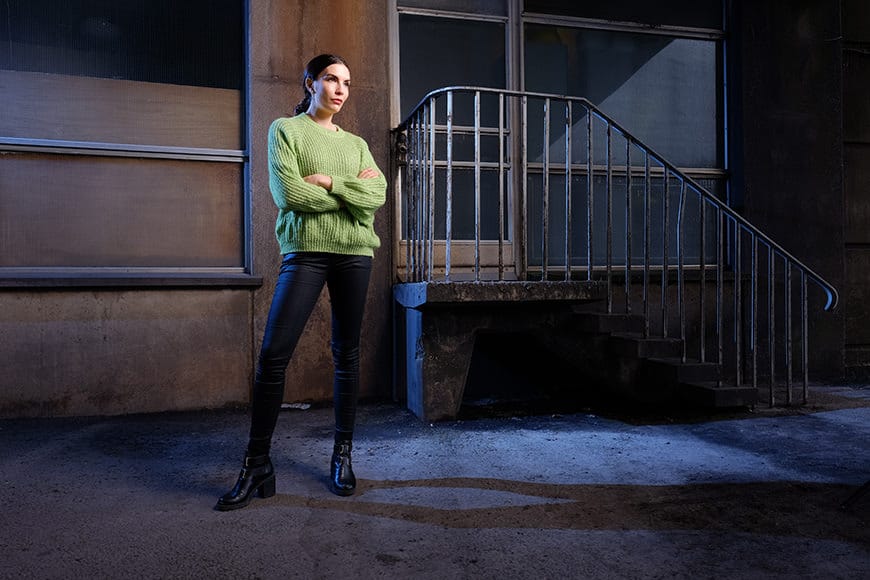
Fuji 16mm f/1.4 | © Damian Lovegrove
The 16mm f/1.4 is built like a tank, much the same as most of the Fuji X mount products. In fact, the Fujifilm x-mount products are built much better than any of the plasticky Nikon or Canon pro options which often cost (and weigh) twice as much.
As for performance, the 16mm f/1.4 is super-sharp, exhibits no lateral colour fringing and no visible light falloff even when shot wide open at f/1.4.
As with all wide-angle lenses, you need your subject to be relatively close to the camera if you really want to separate them from the background via the bokeh. In fact, the 16mm f/1.4 can focus to within just 6cm from the front of the lens!
As for sunstars when shot at smaller apertures, see the long exposure photo below for how beautifully these reproduce.
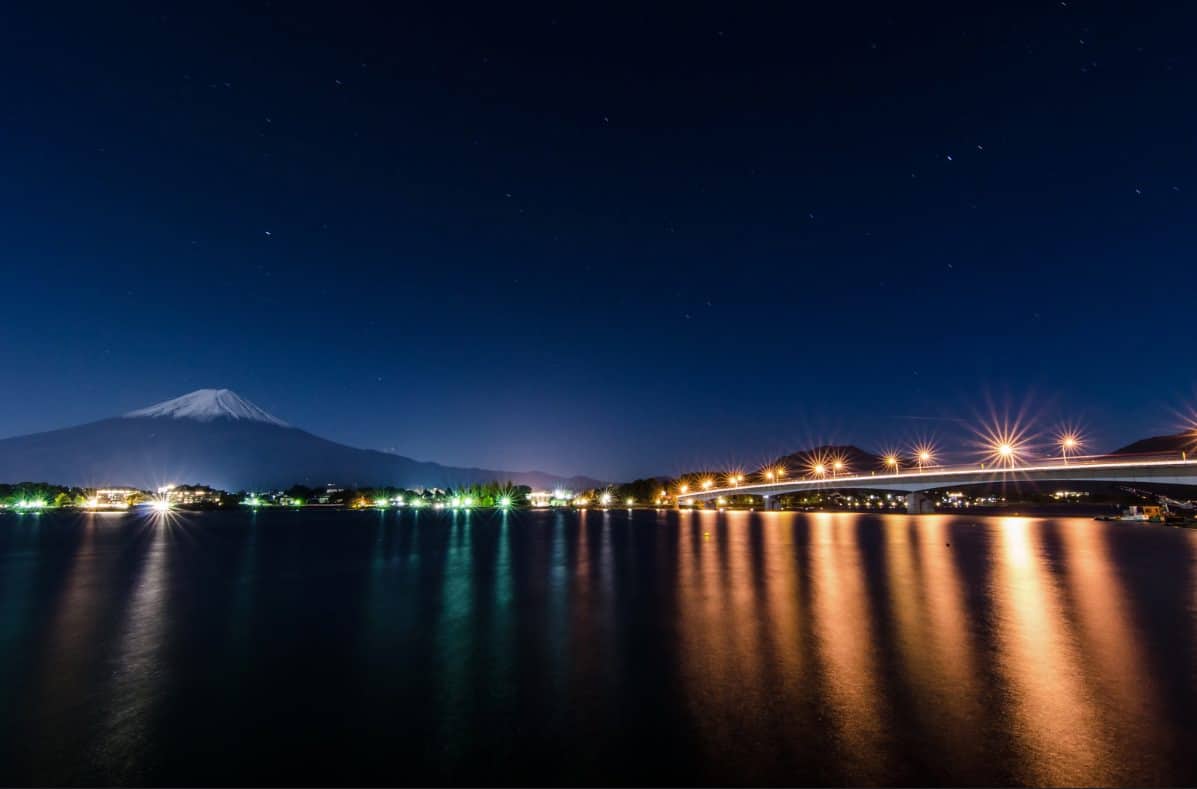
Fuji 16mm f/1.4 Image Sample | © Les Taylor
An advantage of a fast wide-angle lens like the 16mm f/1.4 is your ability to shoot it at slower shutter speeds than a longer lens. Any slight movement when shooting handheld will in effect be masked by the width of the shot, and f/1.4 will let plenty of light in to help achieve a faster shutter speed.
When combined with the high ISO performance of the X-series mirrorless camera lineup, low light photography is made a lot more achievable.
The close-focus distance of just 15cm (0.49ft) is also a welcome addition, allowing you to get up close and personal to your subject, while still including enough of the environment in the frame to tell the complete story.
The 16mm f/1.4 is a perfect match for cameras such as the Fujifilm X-H1 (reviewed here), with its in-body image stabilisation. When combined with the wide-angle and fast aperture, you can get away with hand-holding at slow shutter speeds for up to 1 second and still get a steady shot!
If you’re looking for a great vlogging lens, the 16mm f/1.4 is great for this too – I shot a video handheld using this lens attached to a Fujifilm X-H1, and the field of view was perfect to include my head in the centre of the shot while still including enough background.
If you’re looking for a more affordable and lightweight Fuji wide-angle lens, the 18mm f/2 lens is a decent alternative at almost half the price. You will be losing some ability to shoot in low light and 2mm on the wide end, compared to the 16mm f/1.4 version though.
In my opinion, the 16mm f/1.4 is quite simply the best wide angle lens available for Fuji x series cameras today, thanks to its image quality, build and versatility.
If you’re a stills or video shooter, I highly recommend you have this lens in your camera bag.
6. Fuji 23mm f/1.4
- Aperture: f/1.4
- Focal Length: 23mm (35mm equivalent)
- Dimensions: 2.83 x 2.83 x 2.48 in (71 x 71 x 62 mm)
- Weight: 1.2 lbs (550 g)
- Fuji 23mm f/1.4 Review
For many photographers (including myself), this is one of the best Fuji prime lenses ever made. When I tested a range of Fujifilm lens options for this review, I had this Fuji 23mm f/1.4 on my camera 90% of the time… and absolutely loved it.
It’s usually the smaller prime options such as this one that is the most popular for Fuji X series cameras since they balance so well with the camera body.
35mm is arguably the most popular focal length for photographers due to its versatility, being equally at home shooting portraits as well as being wide enough to fill the frame with interest.
The 23mm f/1.4 is super-sharp, focuses accurately and near instantaneously, has beautiful bokeh when shot wide open at f/1.4, and also displays awesome sun stars when stopped down to smaller apertures.
You can see the subject separation and smooth bokeh exhibited by the 23mm f/1.4 in the image below.
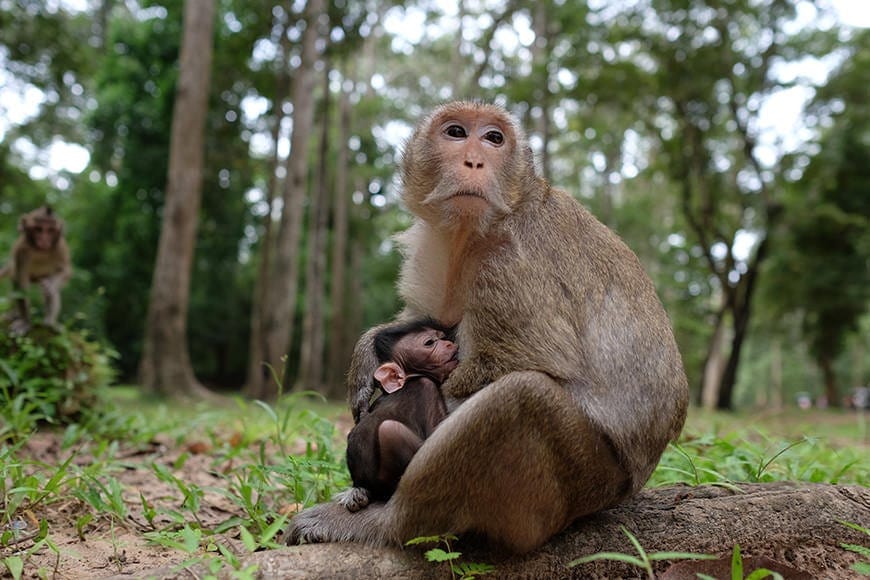
There’s no distortion which is unusual for a 35mm lens, and another surprise is the complete lack of vignetting, even at f/1.4, This could be the ‘cleanest’ 35mm equivalent lens ever produced – it’s definitely the better of the two 23mm XF options, in terms of image quality.
The 23mm f/1.4 is a metal lens which feels sturdy and satisfying in the hand, and even more so when attached to a similarly robust body such as the X-T3 (reviewed here).
In fact, photojournalists and street photographers often have the 23mm f/1.4 permanently attached to their mock-rangefinder X-Pro’s, simply because the combination is just so good.
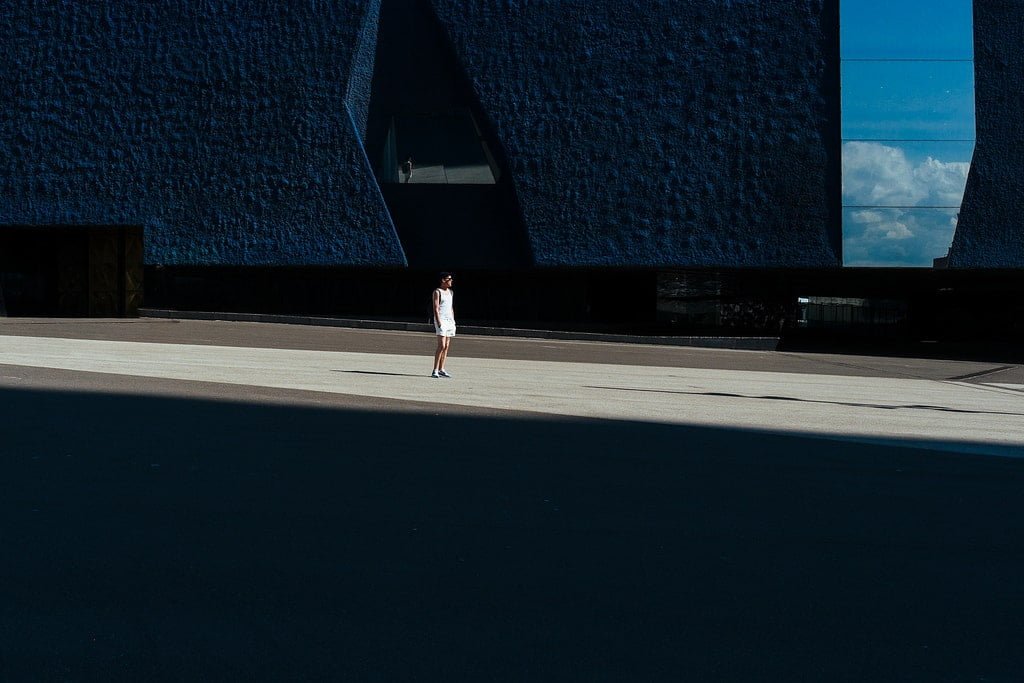
23mm f/1.4 Sample Image | © Sven P
As for sharpness, well Ken Rockwell reports that “the Fujinon 23mm f/1.4 is as sharp as Nikon and Canon’s 35mm f/1.4 options”, which cost twice as much.
I’ve shot with two different Nikon 35mm lenses for over 5 years now, and agree that this compact offering from Fuji can definitely give them a good run for the money.
You can check out the full review of this impressive lens, to see how a Unit Still photographer puts it to good use on film sets.
If you’re looking for one of the best Fujifilm lenses with a fixed focal length, the 23mm f/1.4 is definitely up there. It’s simply an extraordinary lens at a very useful focal length.
7. Fuji 90mm f/2
- Aperture: f/2
- Focal Length: 90mm (137mm equivalent)
- Dimensions: 2.95 x 2.95 x 4.13 in. (75 x 75 x 104 mm)
- Weight: 1.32 lbs (600 g)
- Fuji 90mm f/2 Review
Remember that this round up is in no particular order – if it were, the incredible Fujifilm 90mm f/2 would be closer to the top.
With an equivalent focal length of 137mm, the 90mm f/2 is the best Fuji lens for portrait photography in the Fuji x-mount lens lineup, delivering ultra-sharp, flattering results with zero distortion.
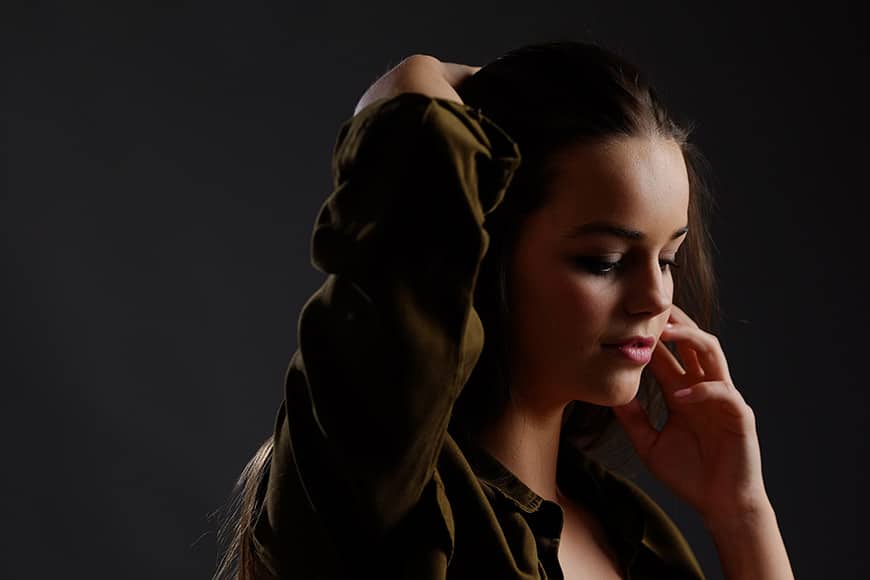
Fujifilm 90mm f/2 Sample Image | © Bert Stephani
The optical construction of 11 elements in 8 groups minimizes vignetting and creates beautiful bokeh thanks to the rounded diaphragm.
As well as being an excellent portraiture lens, the 90mm f/2 is also used widely as a lens for astronomy photography due to its focal length and fast aperture.
As with all Fuji X mount products, the construction is solid. The 90mm f/2 features weather and dust-resistant sealing, allowing usage to temperatures as low as -10 degrees.
The biggest advantage of the 90mm f/2 lens is its lightweight and compact size. Weighing in at only 540g, this lens makes much more sense in my mind than the heavier zoomable Fuji XF lenses.
For those who need to carry their equipment for long periods such as motorsports photographers, the size and weight of the 90mm f/2 is a god-send.
Combined with a Fuji mirrorless body such as the Fujifilm X-T5, the combined weight of just 1kg (2.2lbs) makes the combo a pleasure to use.
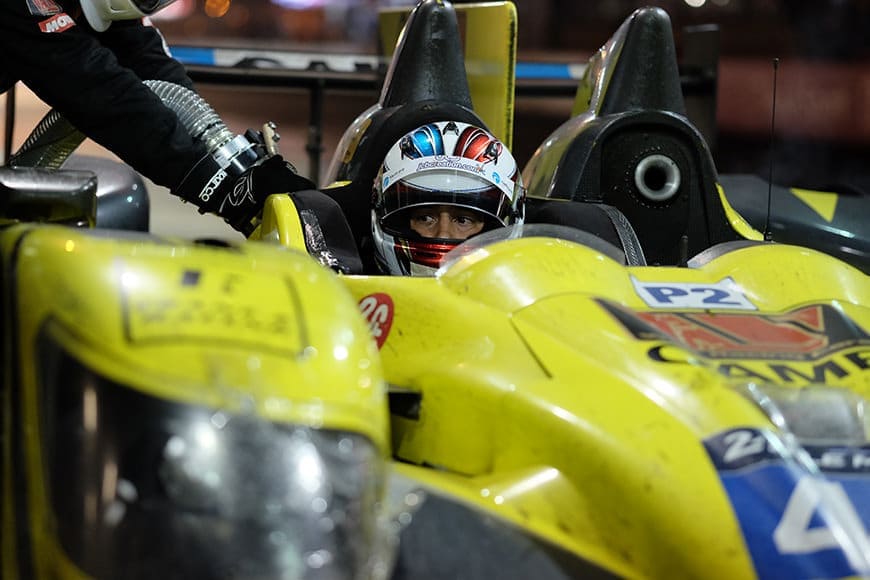
Fujifilm 90mm f/2 Sample Image | © John Rourke
With so many 5 star reviews on Amazon of the Fujifilm 90mm f/2 lens, happy users report “ultra-shaprness”, “superb image quality” and “astounding colour/bokeh/rendering – one of the best Fuji x mount lenses I’ve ever used” of the Fujifilm 90mm f/2.
One pro went as far as to say, “I’ve had a lot of Canon L glass and this equals or exceeds every one…”
If you’re after what is arguably the best Fuji lens for portraits, or you just want a tighter/more compressed composition, the 90mm f/2 should be at the top of your list.
8. Fuji 27mm f/2.8
- Aperture: f/2.8
- Focal Length: 27mm (41mm equivalent)
- Dimensions: 2.4 x 2.4 x 0.91 in. (60 x 60 x 23 mm)
- Weight: 0.17 lbs (77 g)
This ‘pancake lens’ is one of my personal favourites in this roundup (after the Fuji 23mm f/1.4). It’s the smallest and lightest of all in the range, making it a great Fuji lens for travel.
In my mind, the biggest benefit of the Fujifilm X cameras and compact mirrorless cameras, in general, is their size and weight. Putting a big, heavy zoom on the front of a lightweight Fuji camera body just doesn’t make sense to me.
The 27mm f/2.8 adds a mere 0.17 lbs (77 g) to the front of your camera and is an absolute joy to use, making it much more likely that you’ll have your camera in your pocket with you everywhere you go.
It’s also one of the best lenses for the Fujifilm X-E4, and similar pocketable X-Series cameras which pair perfectly with smaller lenses.

Fuji 27mm f/2.8 Sample Image – © Joe D
The focal length of the Fuji 27mm f/2.8 is equivalent to 41mm on a full-frame camera, about the same angle of view as the human eye. This means you can accurately frame your shot before you’ve even lifted the camera to your eye, making it a great choice for street photographers.
Incidentally, if you’re looking for a small and light camera for use on the street, many consider the Fuji X-A1 to be the best camera under $500.
As for performance, the 27mm f/2.8 is sharp at all apertures, although shooting wide open at f/2.8 will result in slight softness in the corners, it’s barely noticeable.
When stopped down to the smaller apertures, the 27mm f/2.8 is at its sharpest, exhibiting no distortion combined with excellent colour rendition, as shown in the jpeg image below which came straight out of a Fuji X-Pro1 with Velvia film simulation.

With a lens of this focal length and a semi-fast f/2.8 aperture, it won’t be pleasing any of the bokeh-whores out there, but still, there’s enough subject separation to elevate your image from the smartphone shooters out there.
The 27mm f/2.8 is available in silver and black. If you’re going travelling and need a lightweight, flexible and fun lens for your new Fuji mirrorless camera, you can’t find much better than this great lens.
It’s also a great lens for a beginner or newcomer to photography.
9. Fuji 10-24mm f/4
- Aperture: f/1.4
- Focal Length: 10-24mm (15-36mm equivalent)
- Dimensions: 3.07 x 3.07 x 3.43 in. (78 x 78 x 87 mm)
- Weight: 0.9 lbs (408 g)
- Fuji 10-24mm f/4 Review
Many photographers prefer to reach for a wide-angle zoom rather than a prime. Often used on tripods by landscape and architectural photographers, the ability to zoom to frame a shot perfectly is a huge advantage when the camera’s position is fixed.
The 15-36mm equivalent focal range of the Fujifilm 10-24mm f/4 makes it extremely versatile, allowing the ability to take advantage of a wide-angle as well as the popular 35mm (36mm) field of view.
It’s another great Fuji wide-angle lens that offers a great amount of flexibility, but just be aware that it isn’t weather resistant.
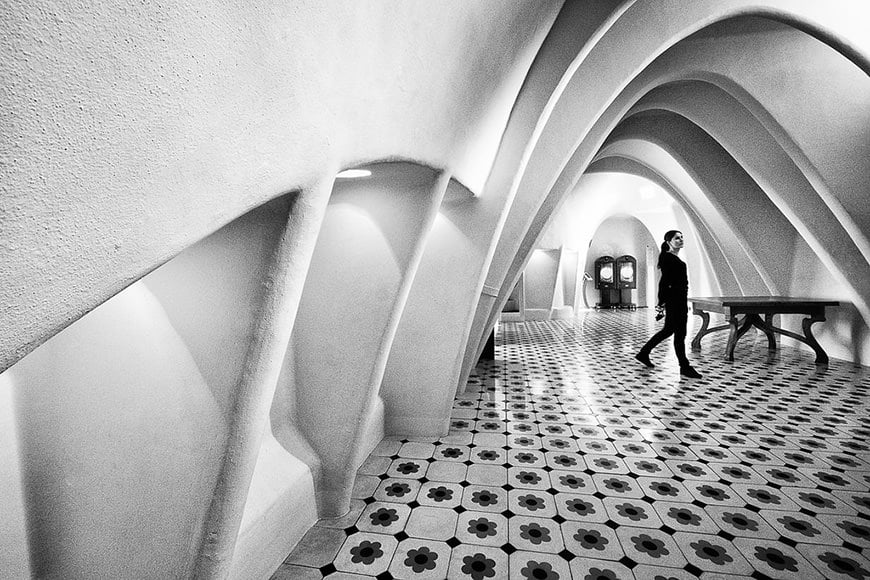
Fujifilm 10-24mm f/4 Sample Image | © Yak Mirs
The fixed f/4 aperture is available throughout the 2.4x zoom range and provides excellent detail from the foreground to the distance. The inclusion of Optical Image Stabilisation in the 10-24mm f/4 means that you’re able to work handheld while shooting in low light too.
Thanks to the use of an inner focusing high-speed AF system with lightweight internal lens elements, the 10-24mm f/4 is very quiet to use. Combined with a silent Fuji mirrorless camera like the Fuji X-T2 (reviewed here), it makes a perfect reportage style documentary photography setup.
A minimum focusing distance of just 28cm means that you can capture both smaller foreground detail along with the wider surroundings to give your subject context, such as in the photo below shot at 10mm.
Note that in the image below, the trees are leaning to the centre of the frame due to the low level of the camera position.
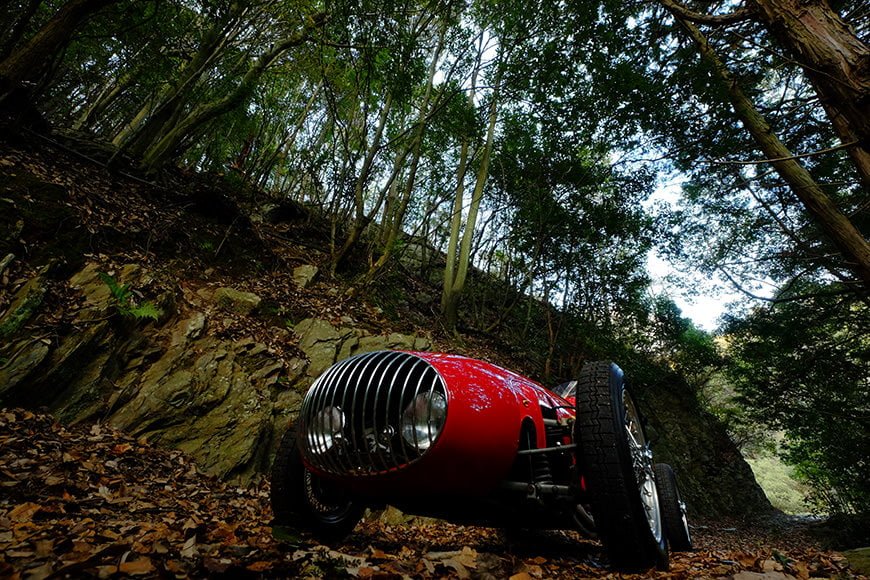
Ken Rockwell calls the 10-24mm f/4 “the best ultrawide for the Fuji X-mount cameras”, and for good reason.
Don’t be put off by the relatively ‘slow’ maximum aperture of f/4 – wide-angle lenses always produce a deeper depth of field, unless you’re right up close to your subject. Having a deep depth of field is also more relevant for landscape and architectural photography.
If you’re concerned about f/4 not being quick enough for low light situations (and the lack of Optical Image Stabilization therein), I’d recommend investing in one of these solid tripods to stabilise your shot, especially at slower shutter speeds.
That said, the optical quality of this lens is superb and the useful 10-24mm focal range still makes the Fujifilm 10-24mm f/4 one of Fuji’s best options available today.
10. Fuji 50-140mm f/2.8
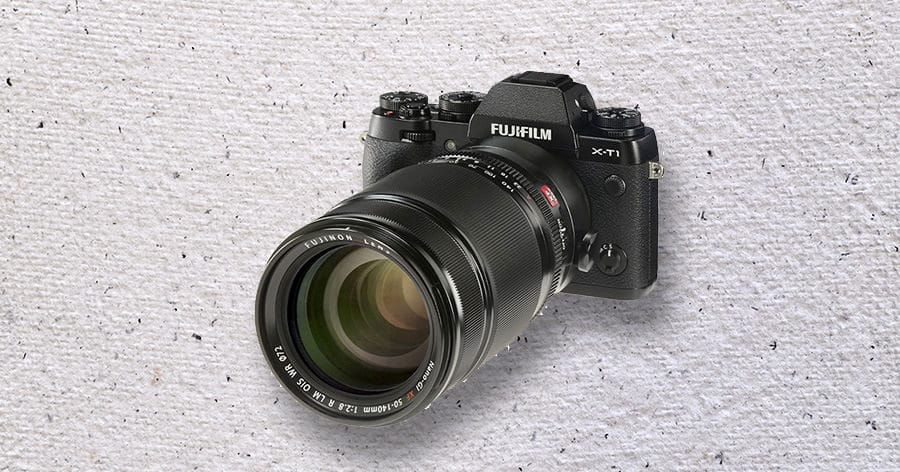
- Aperture: f/2.8
- Focal Length: 50-140mm (76-214mm equivalent)
- Dimensions: 4.9 x 7 x 11.1 in. (124 x 177 x 281 mm)
- Weight: 2.19 lbs (995 g)
- Fuji 50-149mm f/2.8 Review
The 50-140mm f/2.8 is another of the best Fuji X mount zoom lenses, offering the most frequently used telephoto focal lengths (equivalent to 76mm-214) in a robust, well-designed unit.
The Canon/Nikon 70-200mm zooms are the most popular professional zooms, and this is the same with the 50-140mm f/2.8 on the Fuji side. Similar to the more expensive Canon/Nikons, this zoom lens is razor-sharp throughout the entire zoom range.
Autofocus is silent, almost instantaneous and always accurate. In dimmer light, the 50-140mm f/2.8 starts to struggle when compared to a DSLR 70-200mm, so low-light sports use is not advisable.
By day and in good light is where this lens really sings, as shown in the excellent panning motorsports shot below.
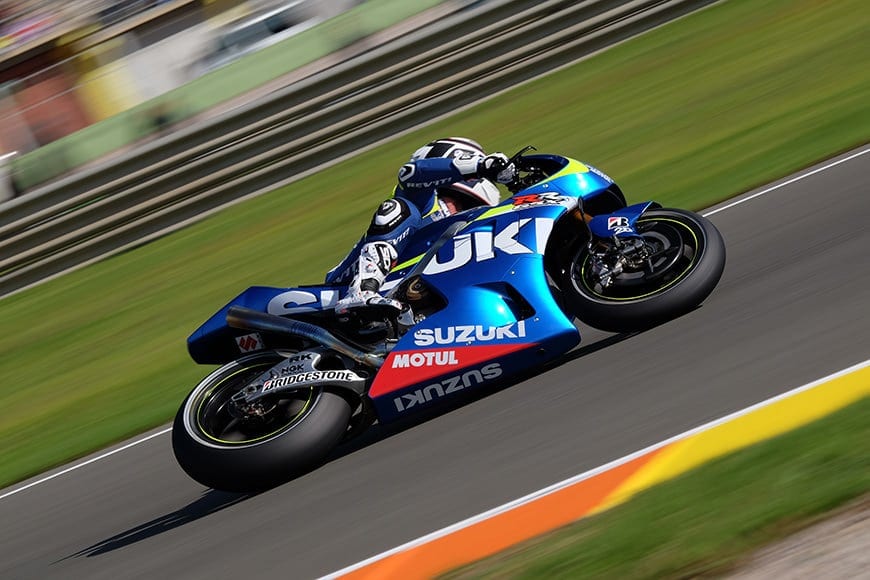
50-140mm f/2.8 Sample Image | © Jacky Ley
Out of focus bokeh elements are soft and creamy, and when shot at its full range of 140mm, the 50-140mm f/2.8 offers excellent subject separation, making it a great portrait lens if you have the room to back up far enough.
Other popular uses of the 50-140mm f/2.8 include wildlife photography and landscape photography work.
Beginners often wrongly assume that landscape photography requires wide-angle Fujifilm lenses, but this is not the case.
Using a telephoto zoom such as the 50-140mm f/2.8 can compress an image, making distant landscape elements appear closer together, for more striking compositions.

Fujifilm 50-140mm f/2.8 Sample Image| © Dhugal Watson
As for the build, you’ll know by now that all the Fuji X mount lenses are built out of metal to outlast your life as a photographer. As with all pro-grade Fuji zooms, the 50-140mm f/2.8 isn’t compact or light, but the internal zoom and focus mean that the lens doesn’t ‘grow’ at least!
Image stabilisation on the 50-140mm f/2.8 also deserves a mention, with handheld shots at shutter speeds as slow as 1/15s shot at 140mm remaining very sharp. Shooting at such slow speeds would be extremely difficult without the inbuilt image stabilisation on this Fuji lens.
Whilst my recommendation for mirrorless cameras is always a small, lightweight prime lens, if you’re in the market for an all-purpose telephoto zoom, the 50-140mm f/2.8 should be on your radar. Stick to daytime usage and you’ll be the envy of every back-aching DSLR shooter stuck on the sidelines!
Also, if you’re looking for a newer alternative, the XF18-120mm f/4 is a good choice. When we get our hands on a review unit, you might end up seeing it in this list of the best Fuji lenses.
11. Fuji 56mm f/1.2
- Aperture: f/1.2
- Focal Length: 56mm (85mm equivalent)
- Dimensions: 2.87 x 2.87 x 2.76 in. (73 x 73 x 70 mm)
- Weight: 0.89 lbs (403 g)
Whilst we’re still on the topic of Fujifilm x-series lenses with near-legendary status and tons of positive customer reviews, the Fujifilm 56mm f/1.2 really deserves its mention as perhaps the best Fuji X lens for portrait photography.
Often hard to find due to high demand, the 56mm f/1.2 is the lens of choice of every wedding photographer I’ve met who shoots with a Fuji mirrorless camera.
As Fuji’s fastest portraiture lens, the 56mm f/1.2 exhibits the 85mm equivalent creamy bokeh when shot wide open at f/1.2, letting in enough light to warrant its use even in the darkest of locations.
Whilst similar f/1.2 lenses from Canon (which are over twice the price of this Fuji) display softness when shot at f/1.2, the 56mm f/1.2 manages to achieve incredible sharpness from edge to edge.
However, it’s the beautiful out-of-focus elements (bokeh) that really make this lens deserving of its inclusion in this roundup.

Fujifilm 56mm f/1.2 Sample Image | © Nathan Elso
Shooting at f/4 to f/5.6 is where sharpness really gets impressive, but let’s face it – no one buys a pro-grade f/1.2 lens to shoot it at anything other than wide-open!
There’s very minor vignetting at f/1.2 and close to zero chromatic aberration. As for focusing on the 56mm f/1.2, it’s not lightning fast but it’s no slouch either. When compared to the bumbling Canon 85mm f/1.2L, the AF on the Fuji beats it on all accounts.
The 56mm f/1.2 feels sturdy with its all-metal construction, much like an expensive Zeiss lens. Despite being built like a tank, this lens remains relatively lightweight and would be the perfect combination on a second camera body worn all day by two-camera shooters.
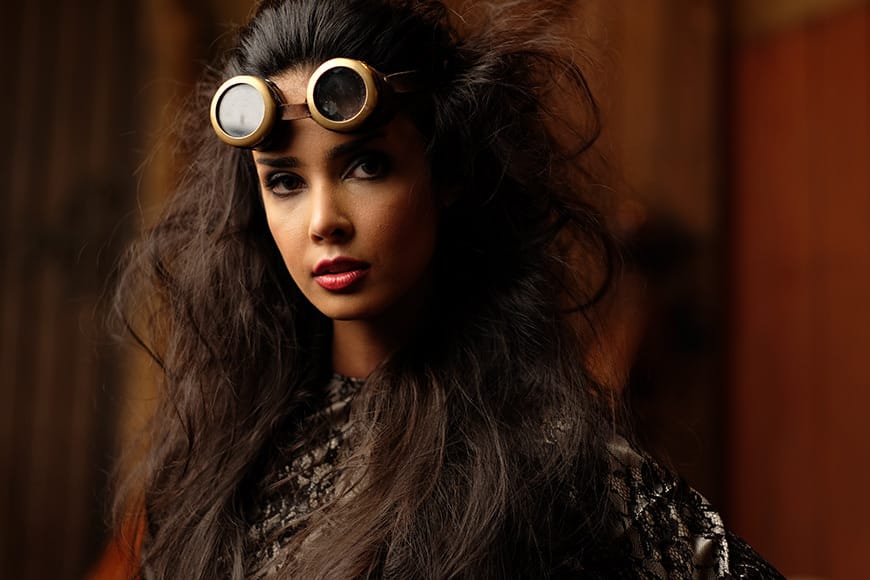
Fujifilm 56mm f/1.2 Sample Image | © Nathan Elson
The 85mm equivalent field of view of the 56mm f/1.2 is a favourite of portrait photographers – tight if you move in close, yet wide enough to include just enough of the background in the frame to tell the story.
If you’re looking for stellar subject separation and low light performance, it’s hard to beat the 56mm f/1.2, and the hundreds of positive customer reviews since its launch in 2014 tell a similar story – read them here.
If you’re lucky enough to find the 56mm f/1.2 in stock and have some money to invest in this impressive portrait lens, you won’t regret your decision.
12. Fuji 50mm f/2 WR

- Aperture: f/2
- Focal Length: 50mm (75mm equivalent)
- Dimensions: 60.0mm x 59.4mm (2.36″ X 2.34″)
- Weight: 200gm (7.05 oz)
- Fuji 50mm f/2 Review
This is a newer inclusion to this comprehensive roundup. While I have already reviewed a lens with a similar focal distance in the 56mm f/1.2, I wanted to share with you a great alternative lens, which may be more suited to your budget and needs.
In January 2017 Fujifilm released the third lens in its new line-up of compact weather-sealed primes.
Aside from its place in this trilogy of Fuifilm lenses, the 50mm f/2 has a unique place in the entire range. It’s a great inclusion especially if you are looking for a portrait lens on a budget.
The release of this lens is another example of Fujifilm listening to consumers and providing them with more choices in their lens purchases.
Much like the 23mm f/2 and the 35mm f/2, this lens is smaller, lighter and cheaper than the larger and more expensive focal equivalent of the 56mm f/1.2.

X-T2 + 50mm f/2 | f/2.5 | 1/250 | ISO200 | © Greg Cromie
Available in black and silver, the 50mm f/2 is a solid and robust lens with a full metal build including the camera mounting plate.
From the smooth glide of the focus ring to the assuring clicks of the aperture ring, there are no compromises in the quality of this nifty little lens.
As with the other smaller Fujinon f/2 primes, this lens includes a weather and dust seal around the base of the mounting plate. The entire lens is also weather and dust sealed and can withstand a serious drenching.
Optical quality for the 50mm f/2 is outstanding with edge to edge sharpness even wide open at f/2.
While not a bokeh monster, this Fuji lens produces a smooth and creamy background rendering perfect for portraiture. Subject separation is distinct and the focal distance allows for a nice amount of image compression.
When it comes to autofocus, the Fujinon XF 50mm f/2 is one of the fastest Fujifilm x-mount options available. There is zero evidence of focus hunt even in low lighting conditions making this a great lens for capturing animal or children portraits.
Given that the Fujinon XF 50mm F/2 is fast, light, compact and fast prime makes it great value for money.
At half the cost of the 56mm and a third of the cost of the Fuji 56mm APD version, this prime now provides consumers with an entry-level option to hone their skills at this focal distance.
The XF 50mm f/2 is an option that also includes exceptional autofocus and fantastic image quality.
Fuji continues to release exceptional products and it’s hard for me to name a bad one!
The 50mm F/2 is no exception to their commitment to designing and producing high-quality lenses that meet the needs of photographers at every level.
It’s the ideal lens for anyone wishing to have a high-quality prime in a versatile and flattering focal distance in their kit bag.
Fuji Lens Reviews | Our Recommendations for Various X-Series Cameras

I’ve tried to be as eclectic as possible with this Fuji lens review roundup, recommending products that are best for the majority of photographers.
The above suggestions are what I consider to be the best all-around lenses that would see you well in most situations.
I see a lot of questions in forums about the best lenses for XT3, XT30, XT200, XH2s, XPro3, XT100, XS10, Xa7, ZT5, X Pro2, XH1, and all the other various compatible Fujifilm mirrorless digital cameras.
If you want to know what Fuji lenses to buy first, this quick summary should help:
The 55-200mm f/3.5-4.8 is an incredible all-rounder and one of the best Fuji zoom lenses I’ve ever used. (If you’re a prime shooter and need something long, get the amazing 90mm f/2 instead – it’s one of the best lenses for portrait photography right now.)
As for the best Fuji wide-angle lens, the 16mm f/1.4 is hard to beat for speed and image quality.
Wide-angle lenses generally allow you to shoot handheld at slower shutter speeds, and at f/1.4, it’s my pick of the best Fuji lens for night photography.
If you’re looking for the best Fuji prime lenses, the 23mm f/1.4 or the 23mm f/2 WR are my two favourites due to their versatile focal length.
Whilst not technically as excellent as the two above options, if you’re looking for a lens with true character, you should definitely check out the 35mm f/1.4.
The f/2 is lighter and weather-resistant (see the amazing video later on in this review), whilst the f/1.4 is obviously slightly better in low light.
If you’re after an ultra-wide-angle zoom, my choice would be the 10-24mm f/4, which many call the best Fuji lens for landscape photography.
Also, if you’re looking to accessorize your Fuji camera with the latest gadgets and gizmos, check out this guide to the best Fuji accessories.
Advice from the Pros: How To Select The Best Fuji Lens For Your Next Photography Adventure
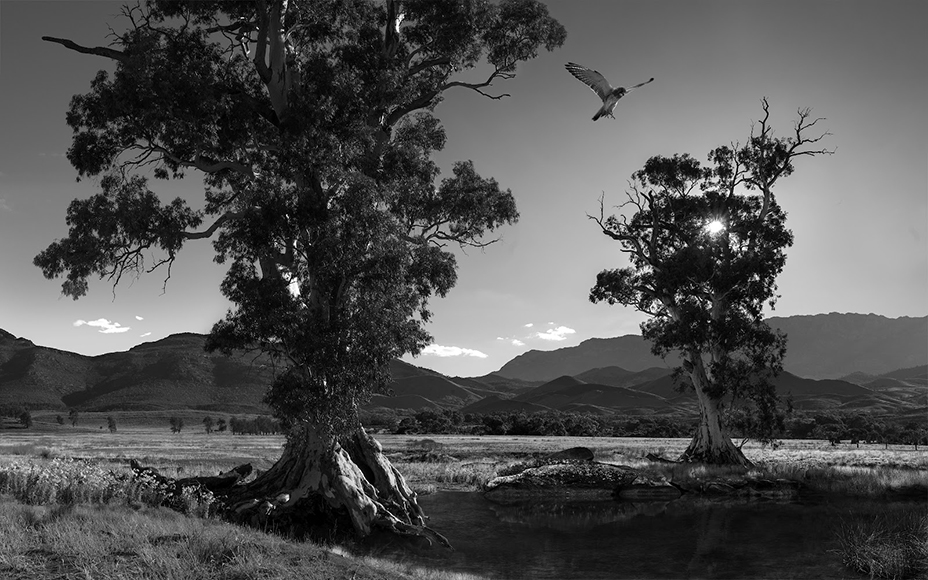
Image Credit: Two Trees by Gary Heery using Fujifilm GF32-64mm lens
Selecting the right lens for any photoshoot can often be the difference between creating a masterpiece and taking just another photo.
There are countless things photographers consider when going out to shoot, such as subject matter, the time of day, lighting, weather, the camera body, and the accompanying lenses, just to name a few.
Within this list, there are even more things to consider like the aperture of the lens, the angle of the lens, a prime or zoom lens, and so on and so forth.
With so many lens options available on the market, it can become overwhelming to select the best lens to capture the best shot.
Award-winning Fujifilm X-Photographers, Andrew Hall and Gary Heery share their Fujifilm lens recommendations for different photography genres to help photographers maximise the potential of every shot.
The expert photographers have been recognised for their contribution to a wide range of photographic genres from the high-speed world of Motorsport to Landscapes and Specialist portraiture.
- Portrait photography
“Zoom lenses will always be my go-to with most of my shots being taken between 70-100mm on the GF45-100mmF4 R LM OIS WR as it means images are cropped and at their most flattering.
It also means the subject can be captured from a distance and there is a strong sense of intimacy, particularly when used in conjunction with a tripod” says Gary Heery, Fujifilm X-Photographer.
“It’s always good to start with a plan of what you’re hoping to achieve in any shoot including what style of photography you like, the desired size and speed of the lens and, of course, the budget!
For portrait photography, I prefer a prime lens such as the XF90mm F2.0 because of its sharpness and bokeh ” explains Andrew Hall.
- Fast-moving photography
“Finding a lens that can keep up with the stealth and speed required to capture fast-moving objects can prove challenging. When it comes to action photography, the XF100-400mm and XF70-300mm are always with me as they are renowned for their sharpness and clarity.”
“However, my current favourite lens for any racetrack action is the new FUJINON XF150-600mm lens as it provides extra reach and is razor-sharp throughout the zoom range.
Not only this, but the zoom function in the XF150-600mm lens is internal, meaning the balance of the lens stays the same throughout the zoom range which is a definite advantage at longer focal lengths,” notes Andrew Hall, Fujifilm X-Photographer.
- Landscape Photography
“Many photographers tend to lean toward a zoom lens when shooting landscape photography as it means there is a bit more versatility on a shoot. One of the limitations of a prime lens is that the only way to zoom in and out is to move to the ideal location for the frame.
That’s why I like to use the XF100-200mmF4.5-5.6 R LM OIS WR however I am usually using shorter focal lengths as I prefer the intimacy it creates,” says Heery.
“When I’m out shooting landscape photography, I tend to reach for a wide-angle zoom lens such as the XF10-24mm zoom however I also use the new XF18mm f1.4 interchangeably.
When it all comes down to it, it’s up to the preferred aesthetic of each photographer as to what lens should be used, but hopefully, photographers can feel more equipped with additional context and knowledge to make the best decision for themselves,” says Hall.
How to Read a Fujifilm Lens
It’s important to understand what all the letters in the lens name mean when you set our to buy a Fujifilm lens (aka Fujinon lens/ Fujifilm XF lens).
Here’s an example of one that’s quite a mouthful:
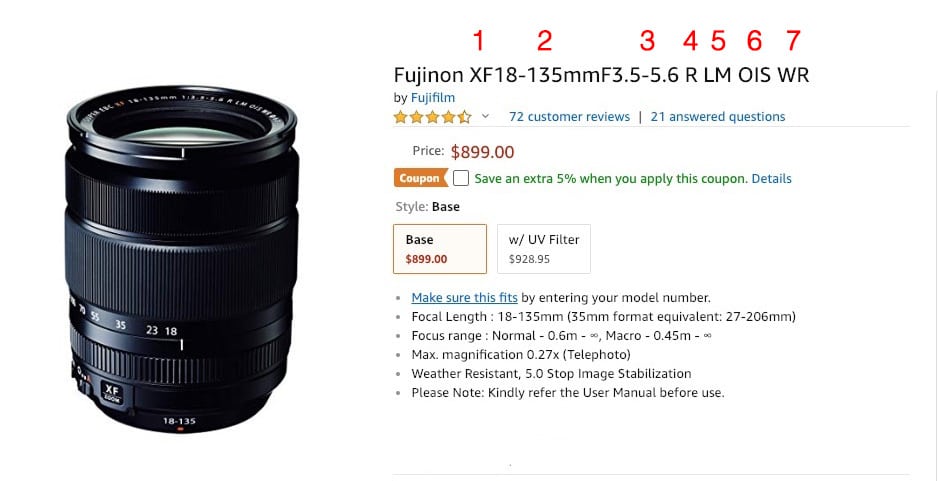
The above lens is the Fujifilm XF 18-135mm f/3.5-5.6 R LM OIS WR. Let’s break down all those confusing abbreviations:
- XF – the lens series (XF or XC)
- 18-135mm – the focal length
- f/2.5-5.6 – the maximum aperture range
- R – the presence of an aperture ring to be able to manually adjust the aperture
- LM – the presence of a linear motor to aid with AF speed
- OIS – the presence of Optical Image Stabilization
- WR – the presence of Weather Resistance
In the reviews above, I’ve removed the superfluous lettering after the main elements of each lens name in the interests of simplicity – feel free to click through to each lens on Amazon to see the entire lens name.
Fuji Lens Roadmap for Fujifilm X-Series Interchangeable Lenses
In May 2022, Fujifilm unveiled the latest development roadmap for interchangeable Fujinon XF lenses for the X-Series of cameras.
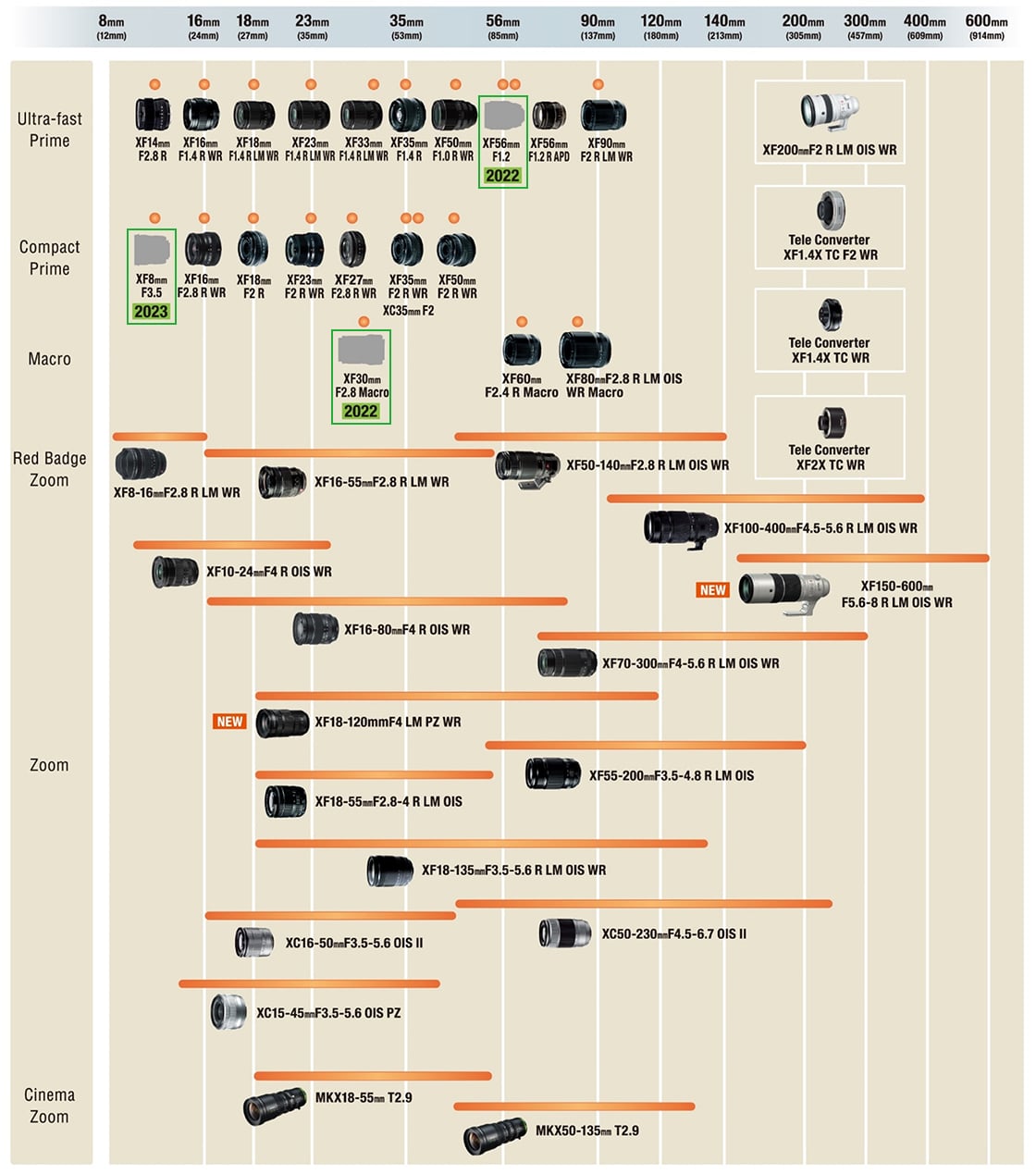
Source: Fujifilm AU | Fujifilm Lens Roadmap
If you want to see the lineup for the Fuji G-mount medium format cameras, check our guide to the best lenses for GFX 100s.
Fujinon Lens Price Guide
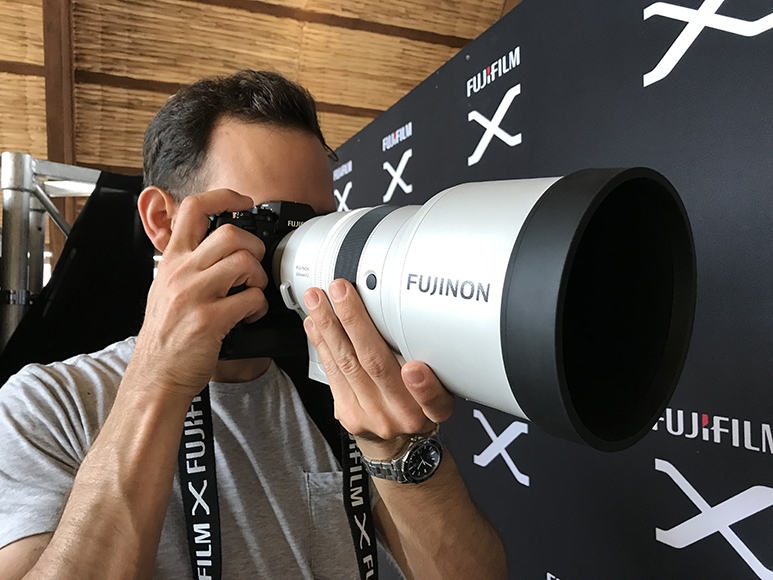
I tried the most expensive Fuji lens… which is also the heaviest! | Fujinon lens highest price
Among all the best X mount lenses, the Fujinon XF27mm f/2.8 R WR lens is the cheapest at $440.
It’s also the most compact, being a pancake lens, and pairs well with any Fuji X-series camera.
How about the Fujinon most expensive lens? The highest-priced Fujinon lens is currently the XF 200mm f/2 R LM OIS WR, which you can buy for $4,999.
I was lucky enough to try it during the launch of the X-T4 a few years ago in Fiji (see above photo).
Fuji Lens Size Comparison Table with Release Dates
Here’s a table showing a comparison of lens sizes for several popular Fujinon lenses, including their release dates:
| Lens | Filter Size | Length | Diameter | Weight | Release Date |
|---|---|---|---|---|---|
| XF 16mm f/1.4 R WR | 67mm | 2.7″ (68.6mm) | 2.9″ (74mm) | 11.8 oz (335g) | 2016 |
| XF 23mm f/2 R WR | 43mm | 1.7″ (43mm) | 2.5″ (63mm) | 7.5 oz (213g) | 2015 |
| XF 35mm f/2 R WR | 43mm | 1.8″ (45.9mm) | 2.5″ (63mm) | 6.6 oz (187g) | 2015 |
| XF 50mm f/2 R WR | 43mm | 1.8″ (46.3mm) | 2.5″ (63mm) | 6.3 oz (180g) | 2015 |
| XF 56mm f/1.2 R | 62mm | 2.8″ (72mm) | 2.9″ (74mm) | 16.8 oz (475g) | 2013 |
| XF 16-55mm f/2.8 R LM WR | 77mm | 4.0″ (102mm) | 3.5″ (89mm) | 23.3 oz (660g) | 2016 |
| XF 18-55mm f/2.8-4 R LM OIS | 58mm | 2.7″ (69mm) | 2.6″ (66mm) | 13.0 oz (370g) | 2013 |
| XF 10-24mm f/4 R OIS | 77mm | 3.5″ (89mm) | 3.0″ (76mm) | 14.1 oz (400g) | 2014 |
| XF 55-200mm f/3.5-4.8 R LM OIS | 58mm | 4.3″ (109mm) | 2.7″ (70mm) | 15.9 oz (450g) | 2013 |
| XF 18-135mm f/3.5-5.6 R LM OIS WR | 58mm | 4.4″ (112mm) | 2.7″ (69mm) | 17.5 oz (495g) | 2014 |
| XF 80mm f/2.8 R LM OIS WR Macro | 62mm | 3.7″ (93mm) | 3.0″ (75mm) | 20.1 oz (570g) | 2016 |
| XF 100-400mm f/4.5-5.6 R LM OIS WR | 77mm | 6.9″ (174mm) | 3.5″ (89mm) | 2.7 lbs (1.2kg) | 2014 |
| XF 90mm f/2 R LM WR | 62mm | 3.5″ (88mm) | 3.0″ (76mm) | 15.7 oz (445g) | 2015 |
| XF 200mm f/2 R LM OIS WR | 77mm | 6.9″ (173mm) | 3.5″ *89mm) | 5.5 lbs (2.5kg) | 2019 |
What Sigma Fuji X Mount Lenses are Available?
Sigma produces a line of lenses for the Fujifilm X-mount system, designed to work with all X-series cameras, including:
- 56mm f/1.4 DC DN Contemporary
- 16mm f/1.4 DC DN Contemporary
- 30mm f/1.4 DC DN Contemporary
- 70mm f/2.8 DG MACRO Art
- 40mm f/1.4 DG HSM Art
- 19mm f/2.8 DN Art
- 24mm f/3.5 DG DN Contemporary
- 35mm f/1.4 DG HSM Art
- 50mm f/1.4 DG HSM Art
- 60-600mm f/4.5-6.3 DG OS HSM Sports
- 70-200mm f/2.8 DG OS HSM Sports
- 100-400mm f/5-6.3 DG DN OS Contemporary
- 100mm f/2.8 DG DN MACRO Art
- 135mm f/1.8 DG HSM Art
- 85mm f/1.4 DG DN Art
See more of the best Sigma Art lenses for all camera systems .
Frequently Asked Questions
Are Fuji Lenses Good?
Fuji x-series lenses have exceptional imaging quality, especially for their size and price. The best Fujifilm lenses are renowned for edge-to-edge sharpness, excellent clarity and colour rendition, and robust build quality. Many also feature weather-sealing.
Does Tamron make lenses for Fuji?
No, Tamron does not currently make lenses for Fuji cameras.
What are Fuji Red Badge lenses?
The Red Badge Fujinon XF lenses offer the best performance in focusing speed and image quality. There are currently three XF Red Badge lenses: 16-55mm f/2.8, 50-140mm f/2.8 and 100-400mm f/4.5-5.6.
Who makes Fujinon Lenses?
‘Fujinon’ is the correct naming convention for the range of lenses made by Fuji Photo Film Co., Ltd, more commonly known as Fujifilm.
What does the R mean on Fuji lenses?
The ‘R’ is an abbreviation of ‘Ring’ and signifies that the Fuji camera lens is equipped with an aperture ring. i.e. you can use the ring around the lens to control the lens’ aperture value.
What is the difference between Fujinon XF and XC lenses?
The XC lenses are considered consumer-level in quality, build and performance, while Fujinon XF refers to the semi-pro/pro lenses.
Fujinon XF lenses feature all-metal construction, larger maximum apertures, aperture rings, and OIS toggle switches.
What is LM on a Fuji lens?
The ‘LM’ is an abbreviation of ‘linear motor’, which exists on some lenses to aid with AF speed and performance.
What Fujinon lens has the highest price?
The Fujinon Premista 19-45mm T2.9 Large Format Cine Zoom Lens has the highest price, at approximately $49,900! Thankfully, there are plenty of other ‘best’ lenses for Fujifilm aficionados that cost a lot less than this.
What lenses are compatible with Fuji x mount?
The Fujifilm X mount is compatible with Fujinon lenses specifically designed for Fujifilm X series cameras.
There are also a number of aftermarket lenses for Fuji X mount made by Samyang, Rokinon, Venus Laowa, and Mitakon Zhongyi.
These third-party lenses may offer compatibility, similar focal lengths, aperture values, and image quality to Fujinon lenses, but they may not have the same level of build quality or autofocus performance as Fujinon lenses.
You can also adapt various Canon, Nikon, or even micro four-thirds lenses to the X mount by purchasing the appropriate adapter.
What’s the best Fuji X mount lens for:
(i) Astrophotography
The XF 14mm f/2.8 R Fuji camera lens is great for astrophotography. It has excellent sharpness and minimal chromatic aberrations, helping to produce high-quality images of the night sky. The wide field of view will help capture a large field of view and f/2.8 will help keep your camera’s ISO at a minimum.
(ii) Videography and filmmaking
This will depend on the needs of the filmmaker since focal lengths will vary depending on the filming situation. However, some popular lenses for videography include the XF 18-55 f/2.8-4 with its versatile focal length at an affordable price, the 23mm f/1.4 for its fast maximum aperture and wide field of view, and the 50-140mm f/2.8 R with its long focal range for blurring the background.
(iii) Interior photography
The Fujinon XF 10-24mm f/4 OIS provides a wide-angle focal length range and image stabilization for sharp and stable shots. Also, the XF 16mm f/1.4 R WR has a fast maximum aperture of f/1.4, making it ideal for low-light conditions and capturing a wide field of view.
(iv) Event photography
My choice would be the XF 16-55mm f/2.8 R LM WR with its constant f/2.8 aperture, fast autofocus, and versatile focal length range, which makes it perfect for a wide range of event photography needs.
(v) Car photography
A zoom lens like the Fujinon XF 50-140mm f/2.8 R LM OIS WR is perfect if you’re taking photos of moving cars from a distance. It has a fast maximum aperture and long focal length range, making it ideal for capturing distant cars and details.
For stationary/close-up work, the Fujinon XF 16-80mm f/4 R OIS WR has a versatile focal length range, image stabilization, and a constant aperture of f/4, making it suitable for a wide range of car photography needs.
(vi) Family photography
Most family photographers who own a Fuji camera own the Fujifilm XF 18-55mm f/2.8-4 R LM OIS – a standard zoom that covers a useful range of focal lengths, making it ideal for family pictures. The OIS can be helpful in low-light scenarios. The 50-140mm f/2.8 R LM OIS WR is also great for photographing candid family shots from a distance.
What lenses are compatible with the Fuji X mount?
- Sigma 16mm f/1.4 DC DN
- Sigma 56mm f/1.4 DC DN
- Tokina 23mm f/1.4 ATX-M
- Fujifilm 14mm f/2.8 R
- Fujifilm 16mm f/1.4 R WR
- Fujifilm 16mm f/2.8 R WR
What lenses fit the Fuji X series?
- Zeiss Touit 12mm f/2.8
- Fujifilm XF 16mm f/1.4 R WR
- Fujinon XF18mm f/1.4 R LM WR
- Fujinon XF23mm f/2 R WR
- Fujinon XF60mm f/2.4 R Macro
- Fujinon XC15-45mm f/3.5-5.6 OIS PZ
Best Fujifilm X Lenses | Final Words
I hope you enjoyed this selection of the best Fuji X lenses. As and when new X-mount lenses are released, I’ll review them and update this post accordingly.
MILCs (mirrorless interchangeable lens cameras) are only as good as the lenses you attach, so it’s good to know you’ll never be let down with the Fuji X series.
Resources & References





